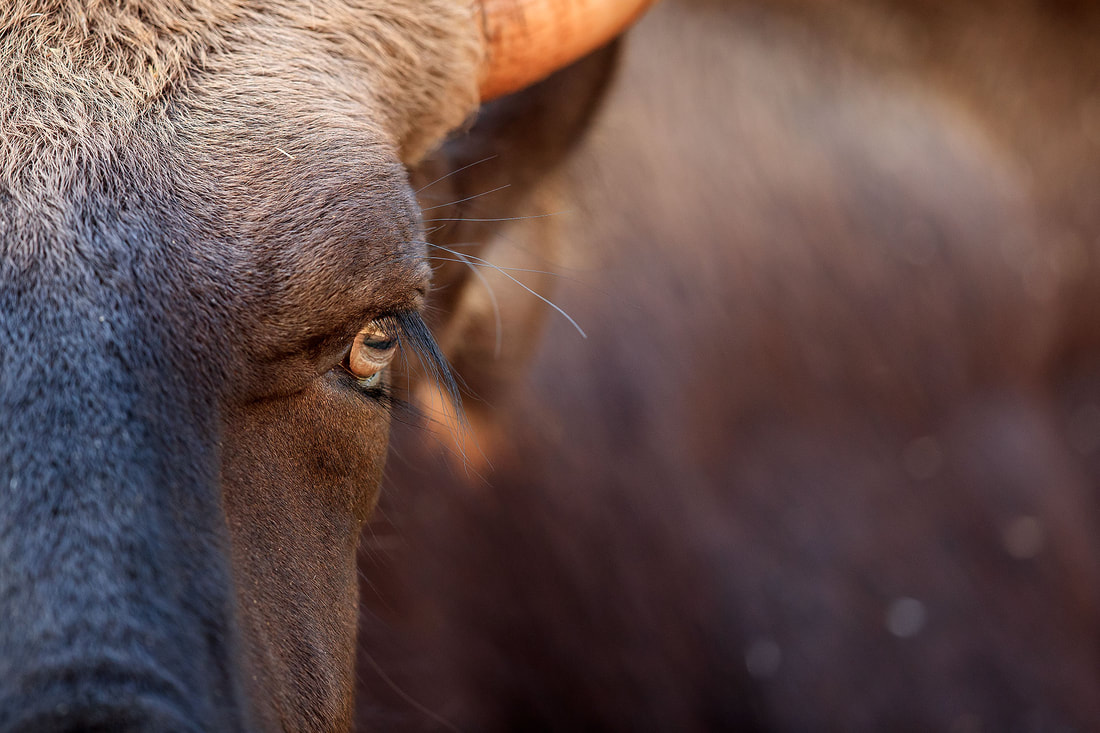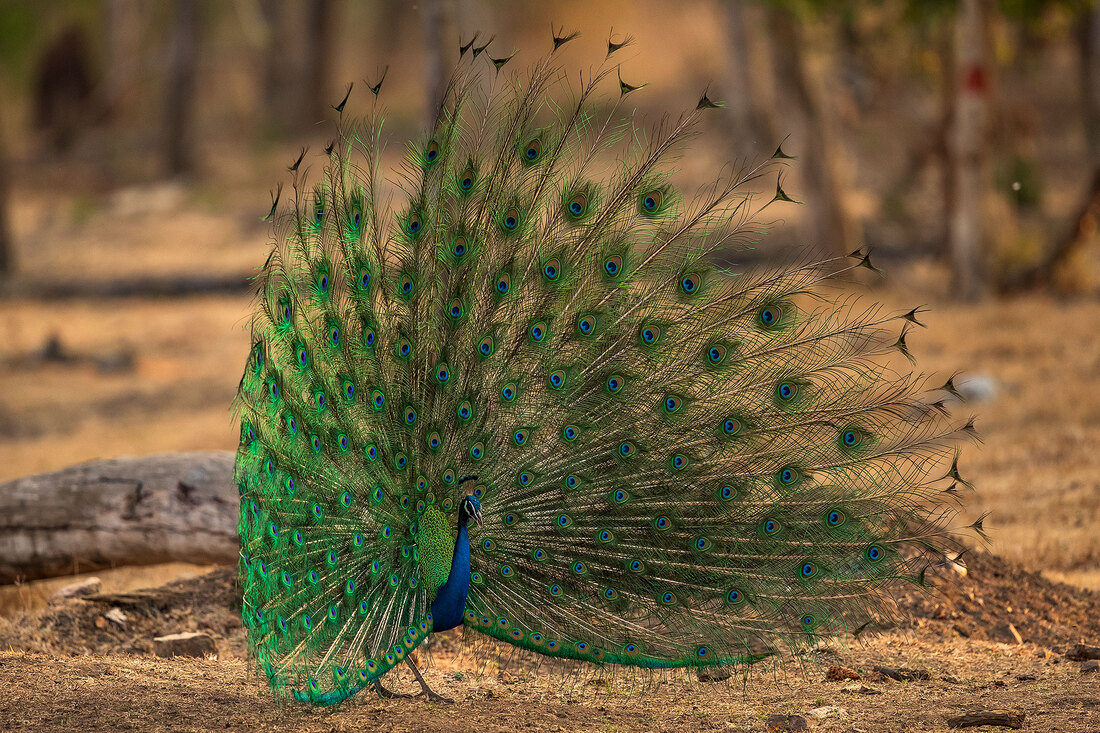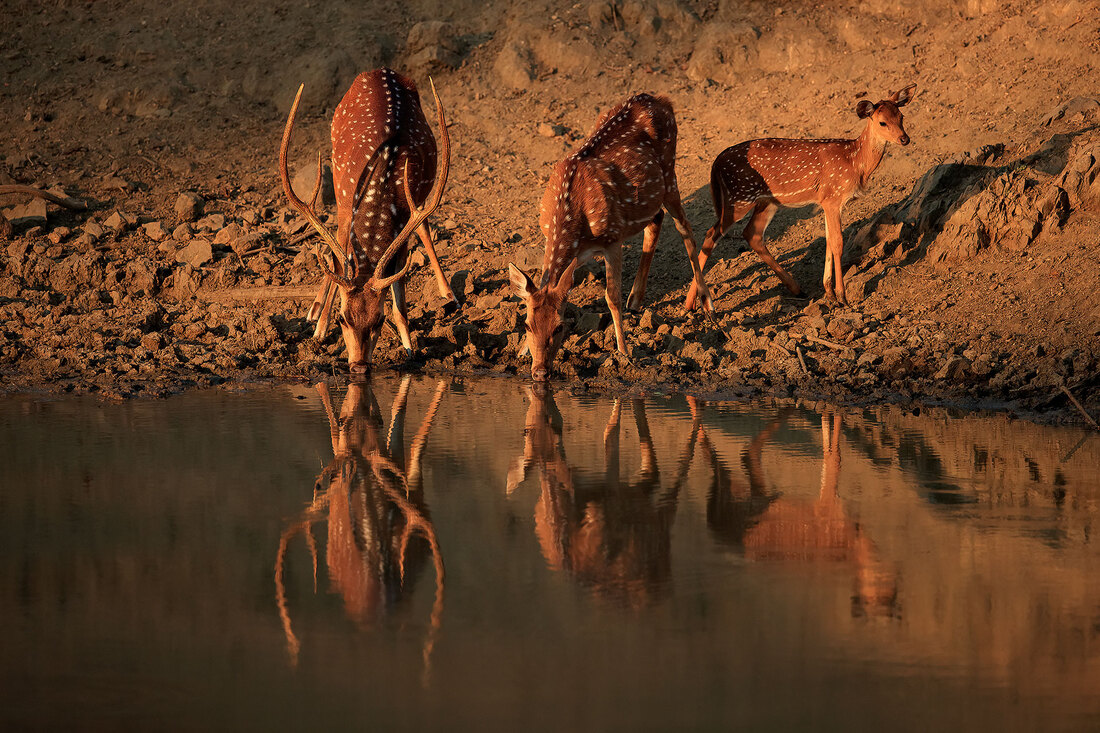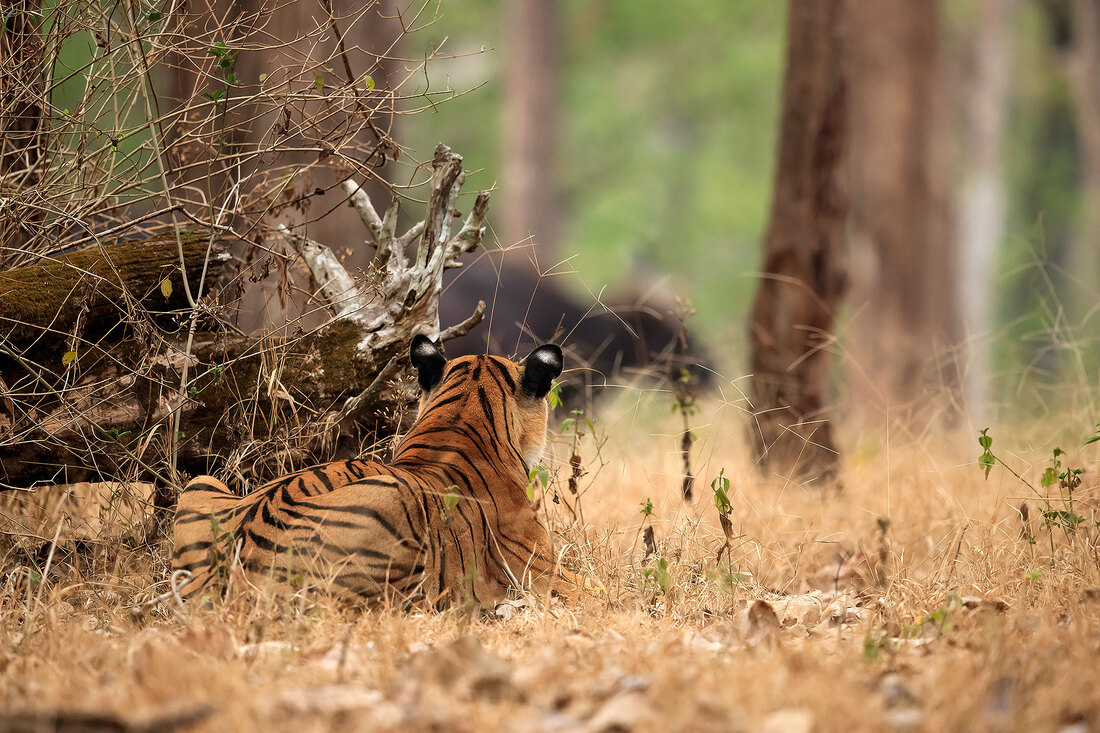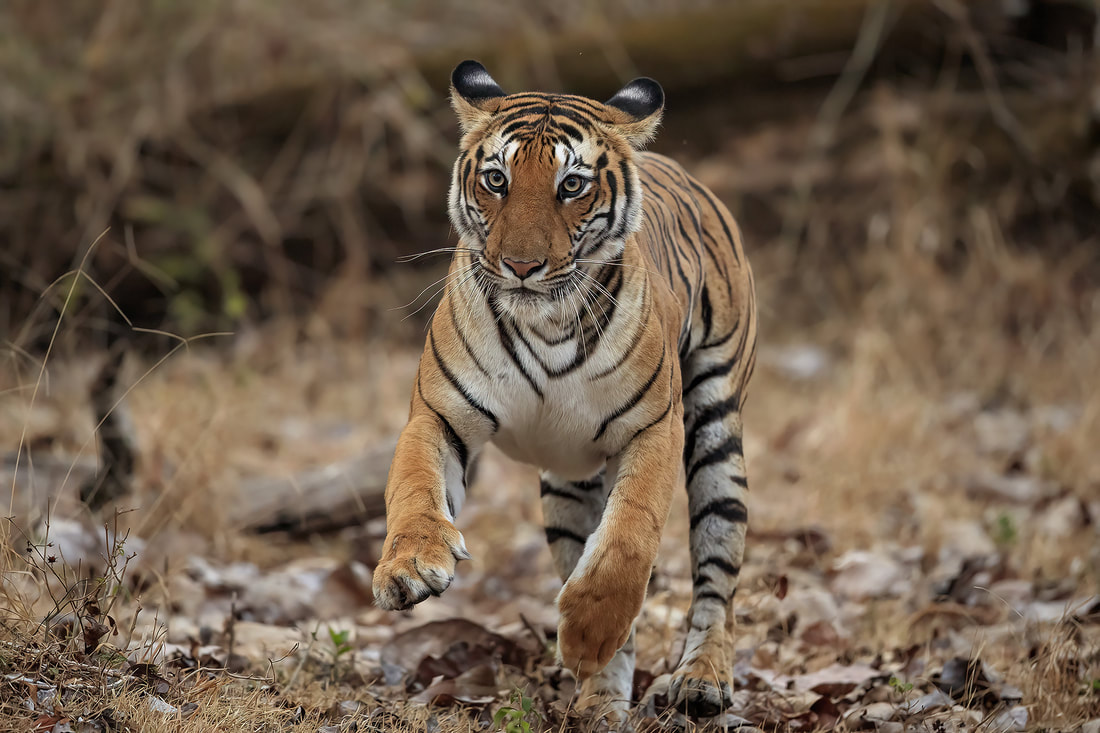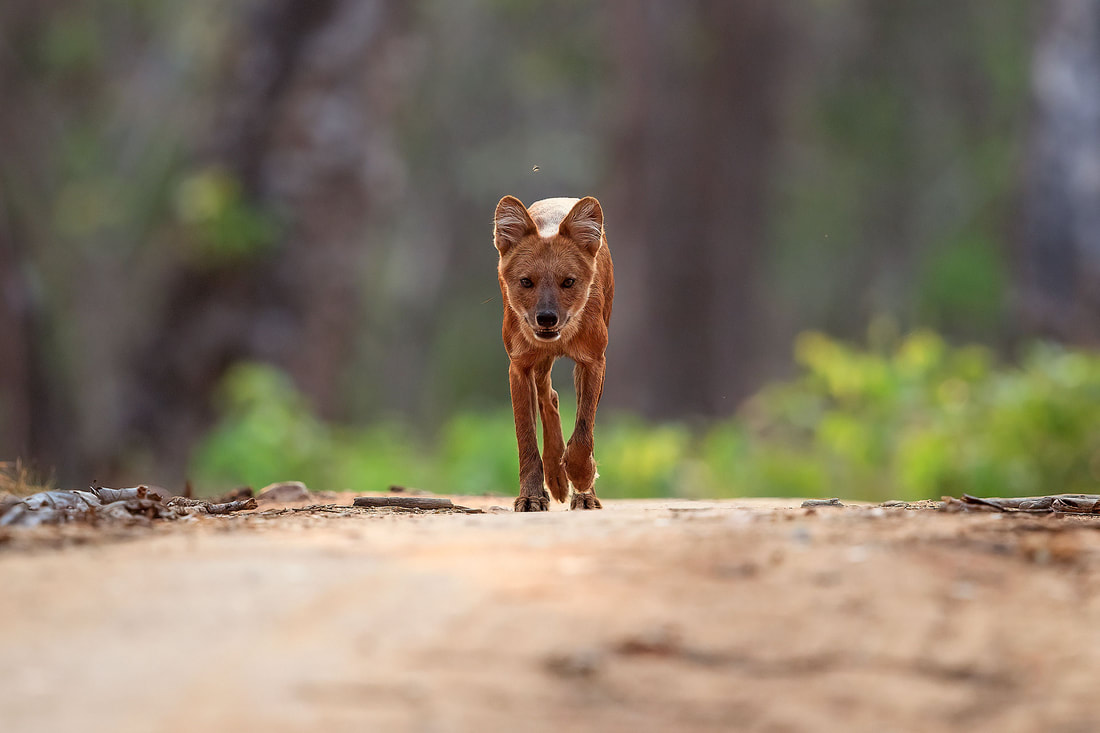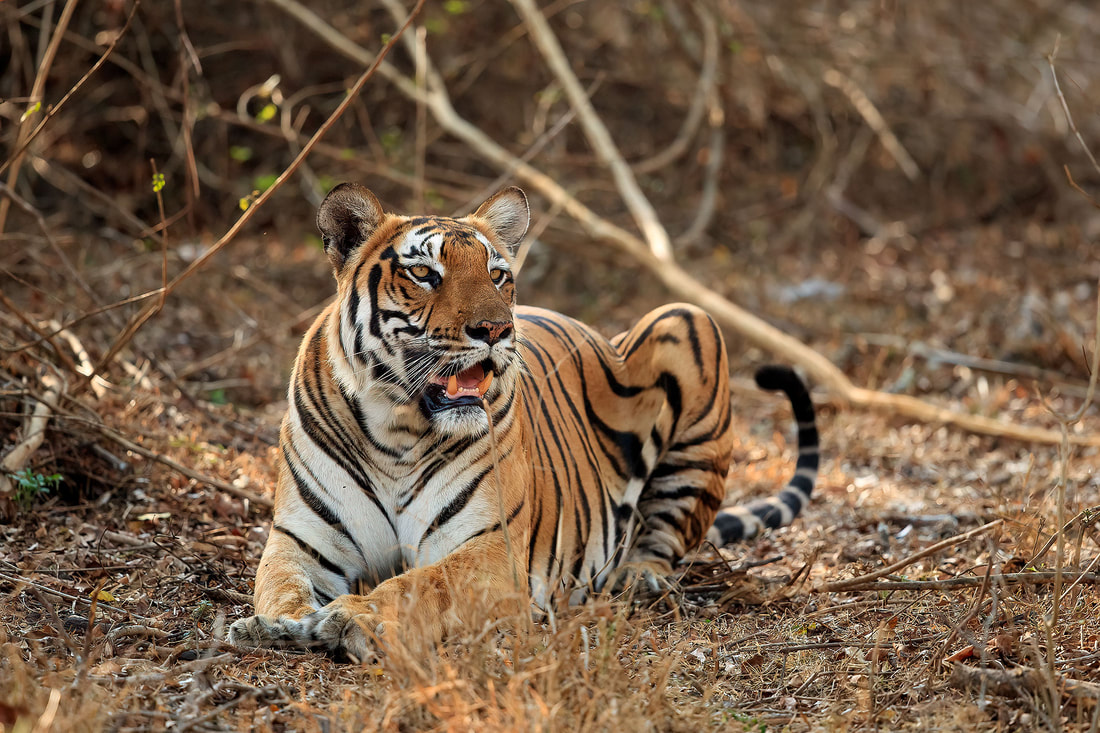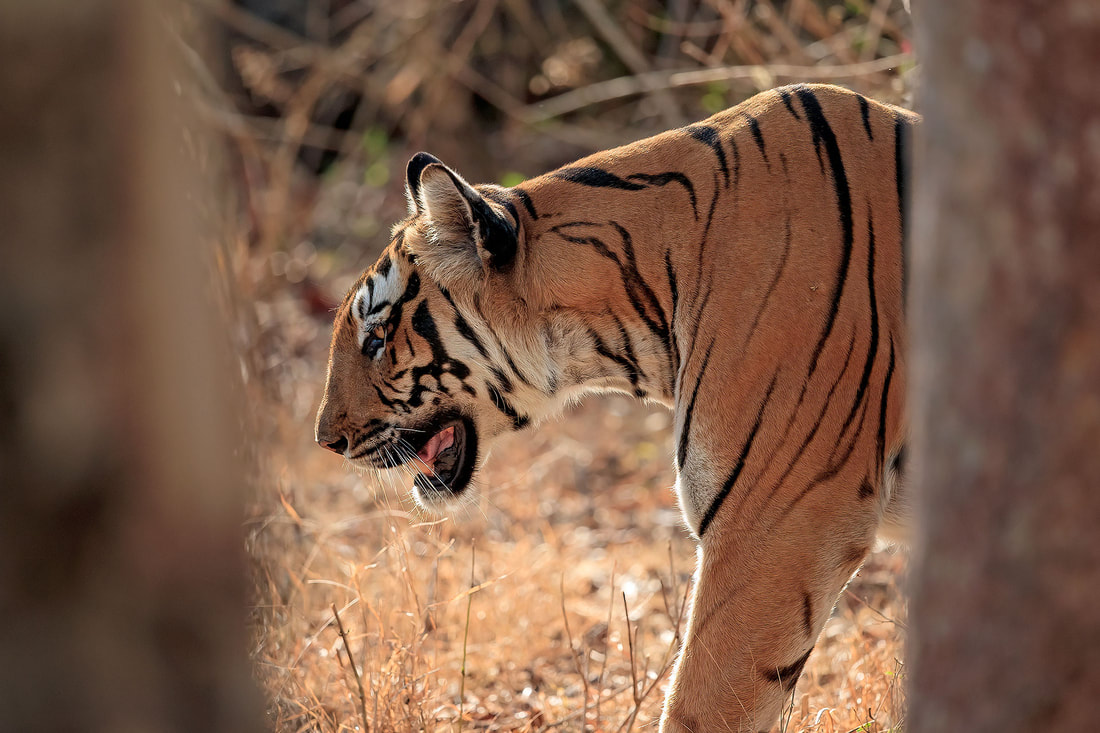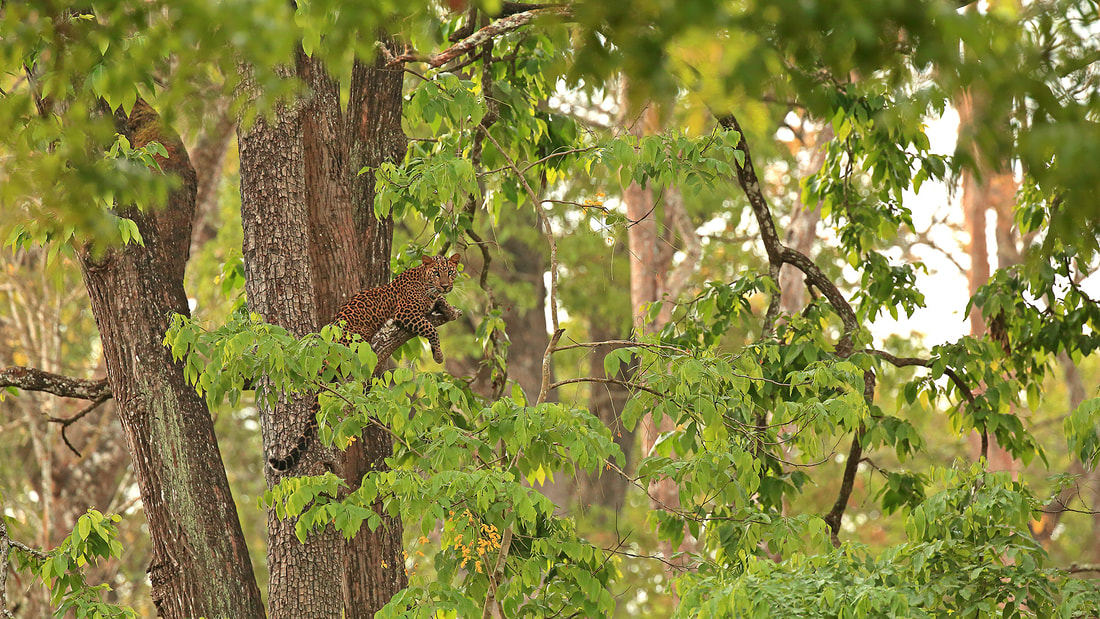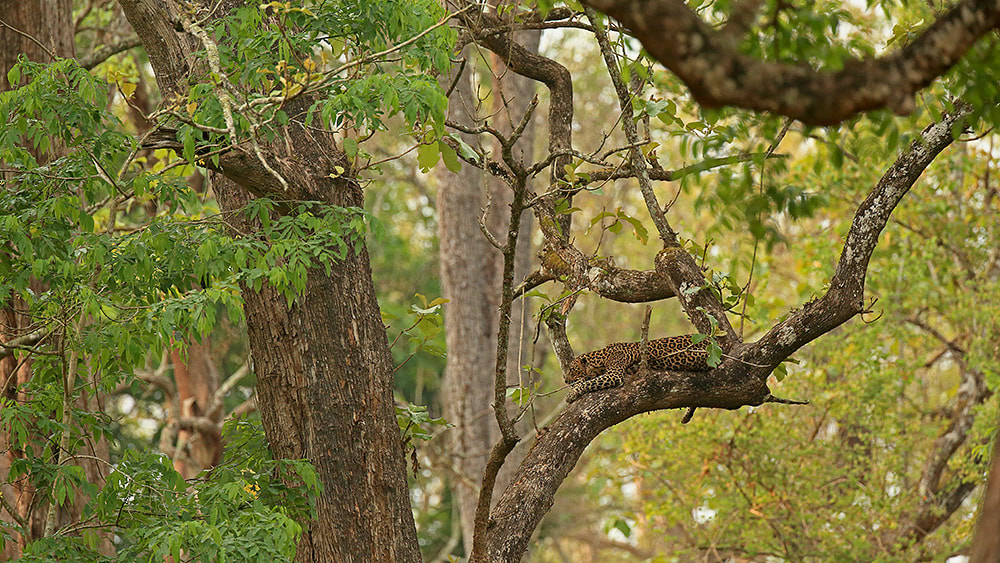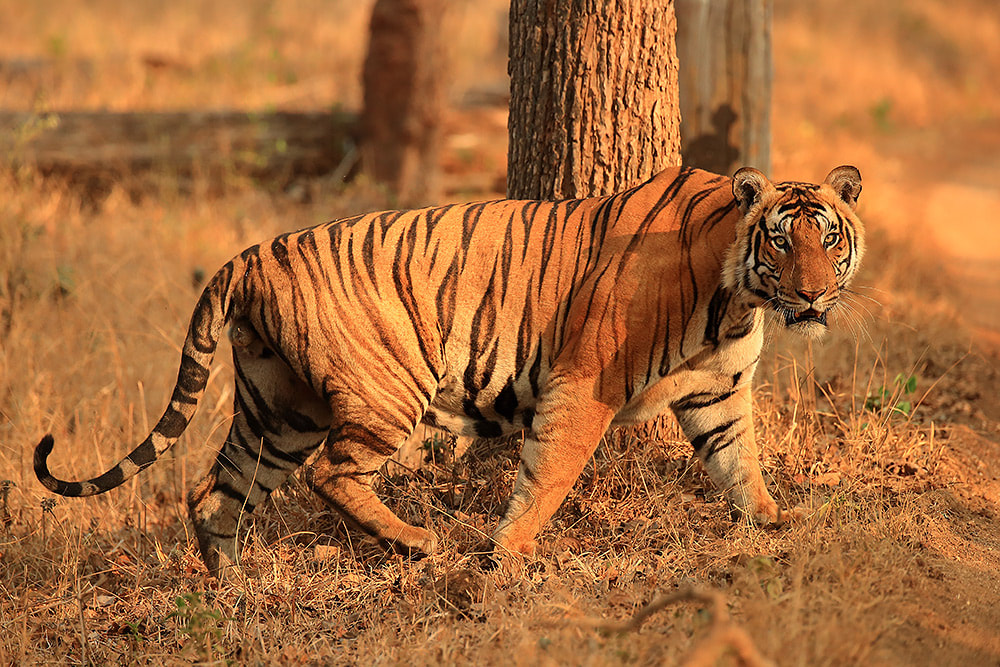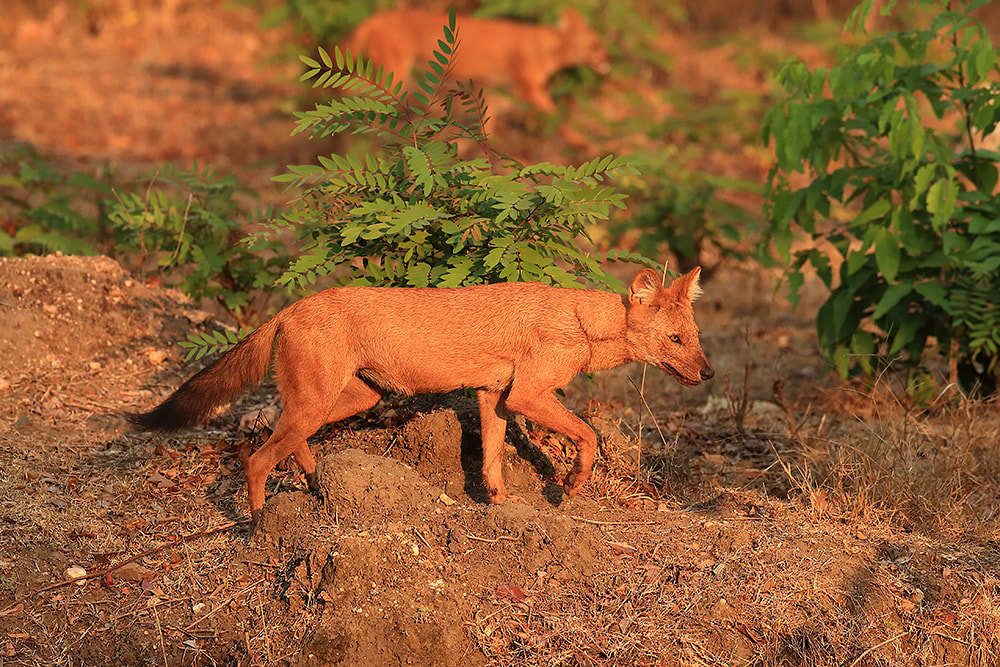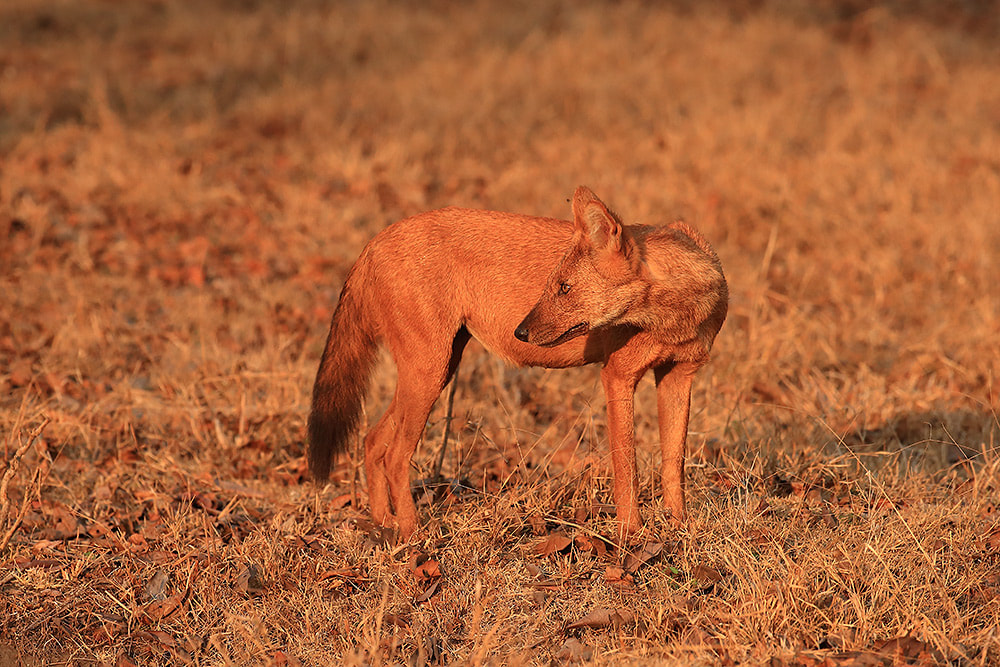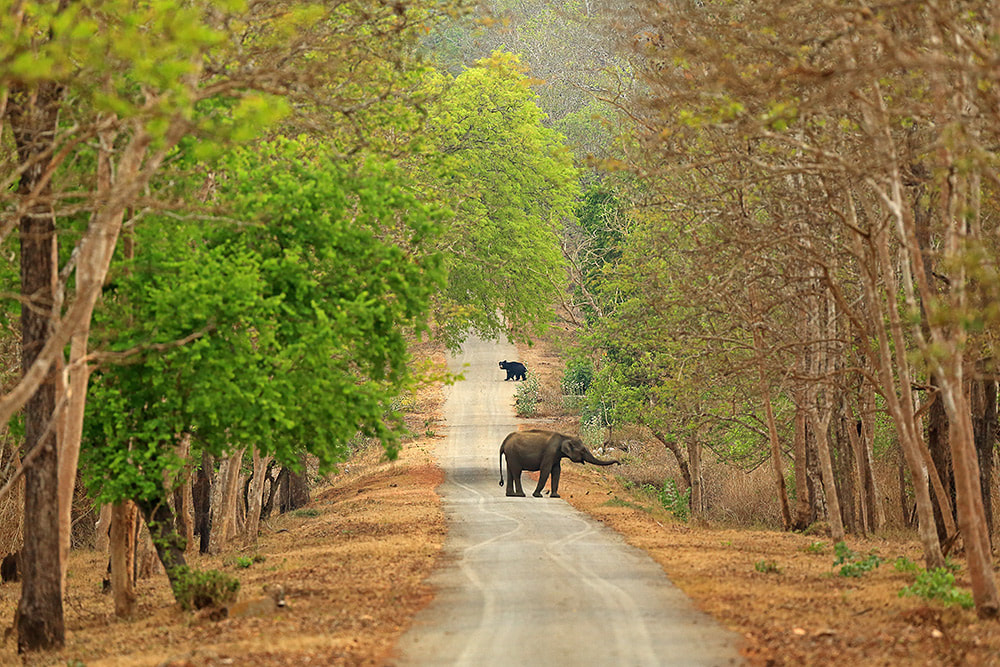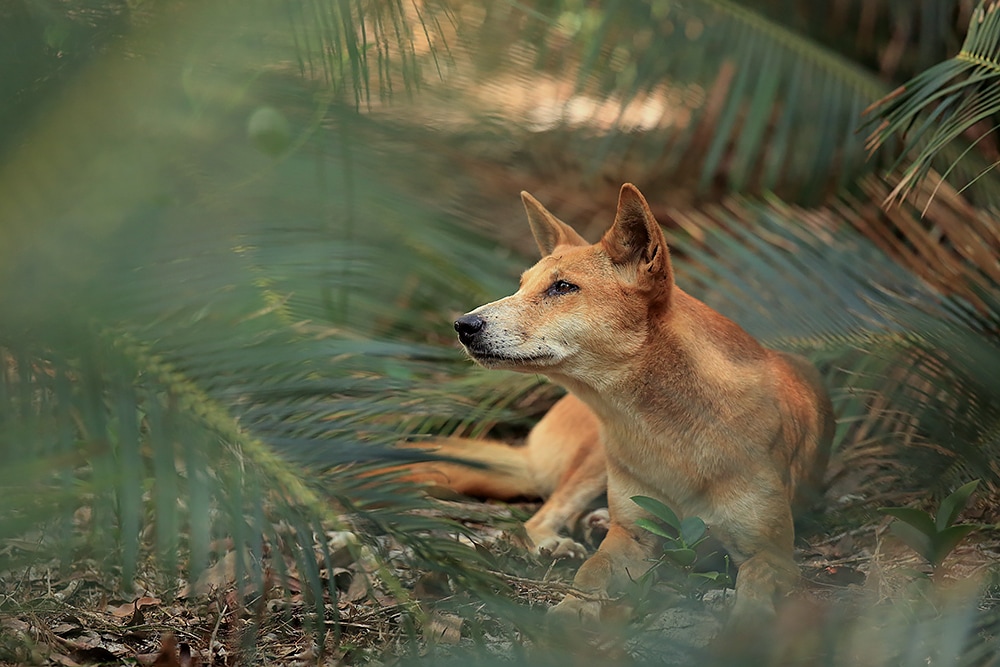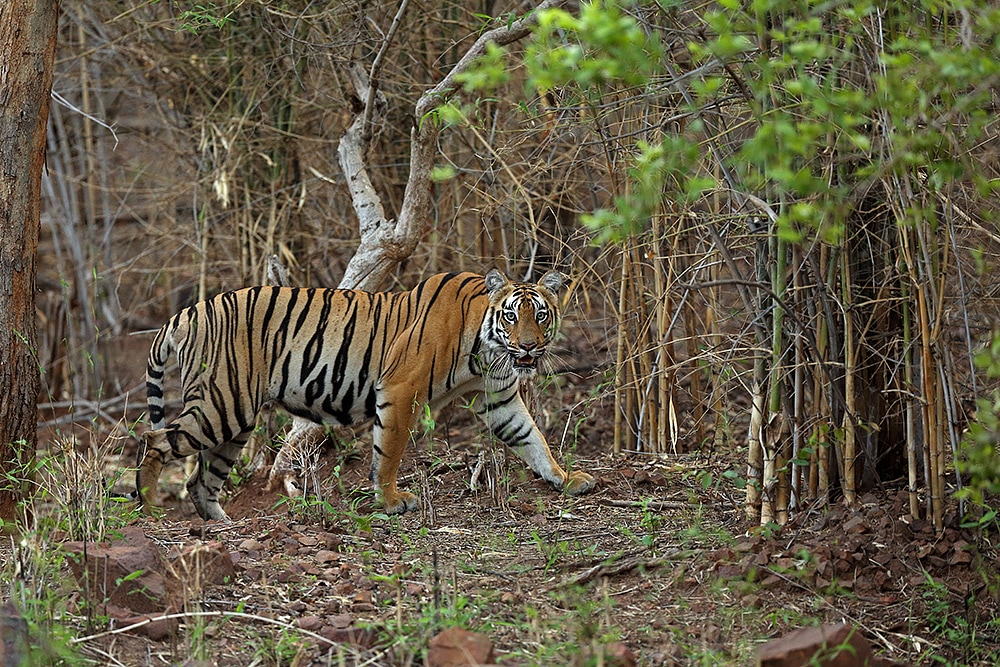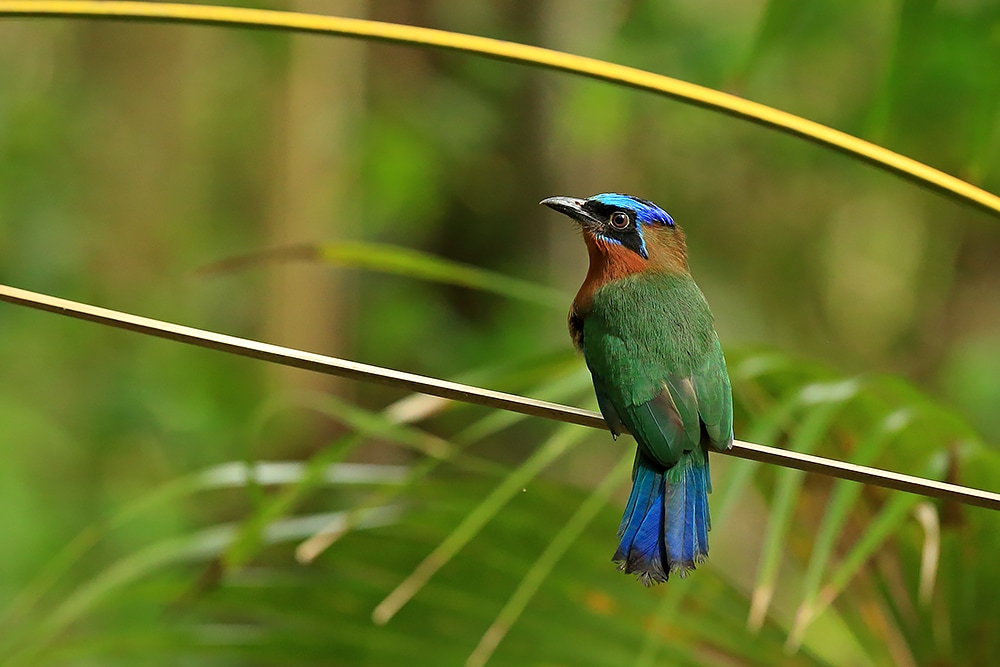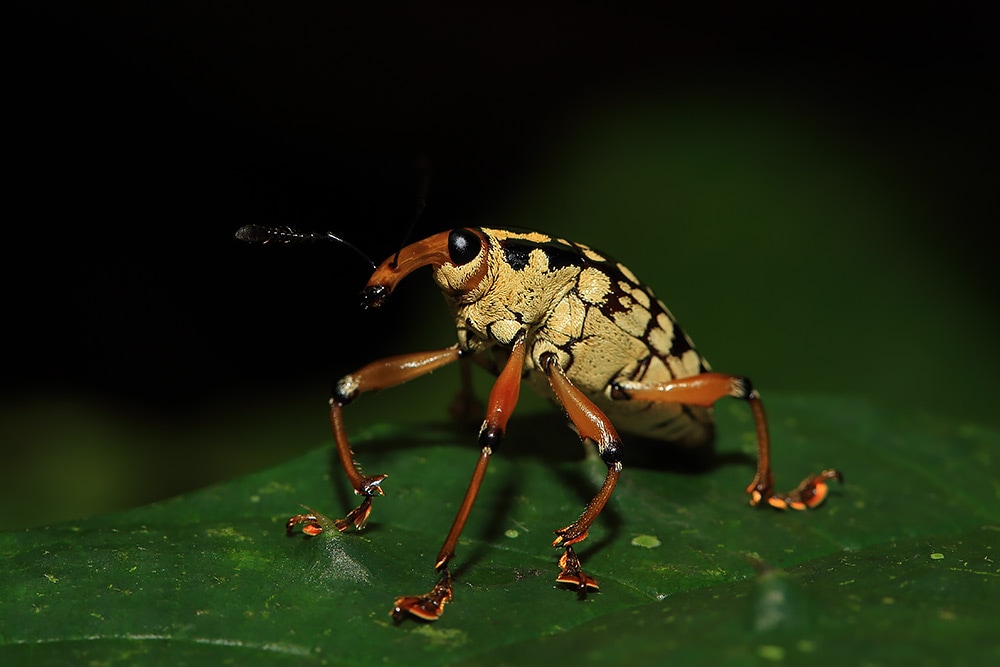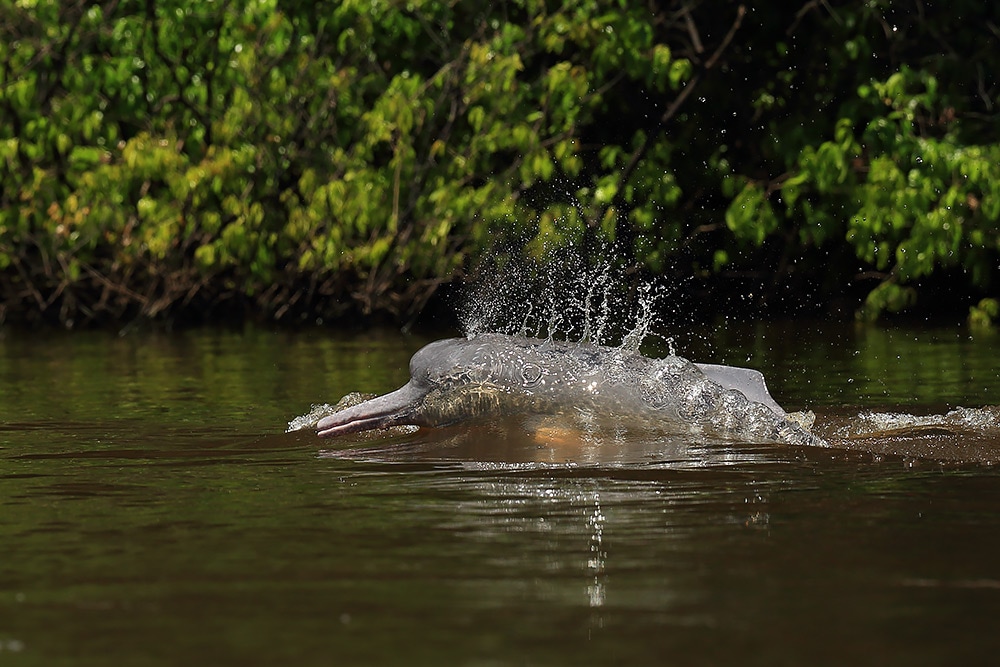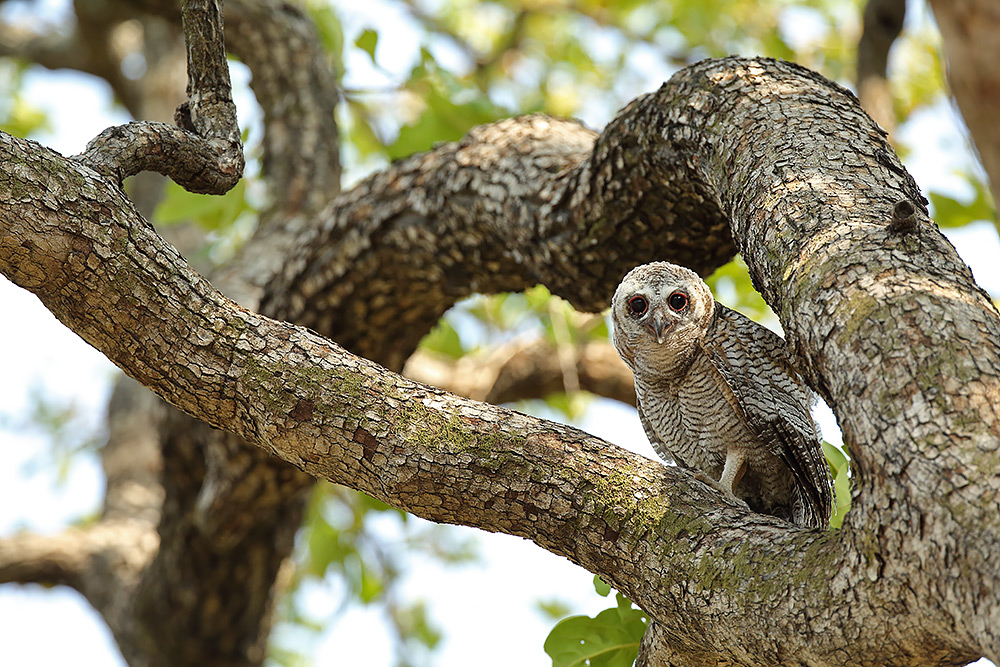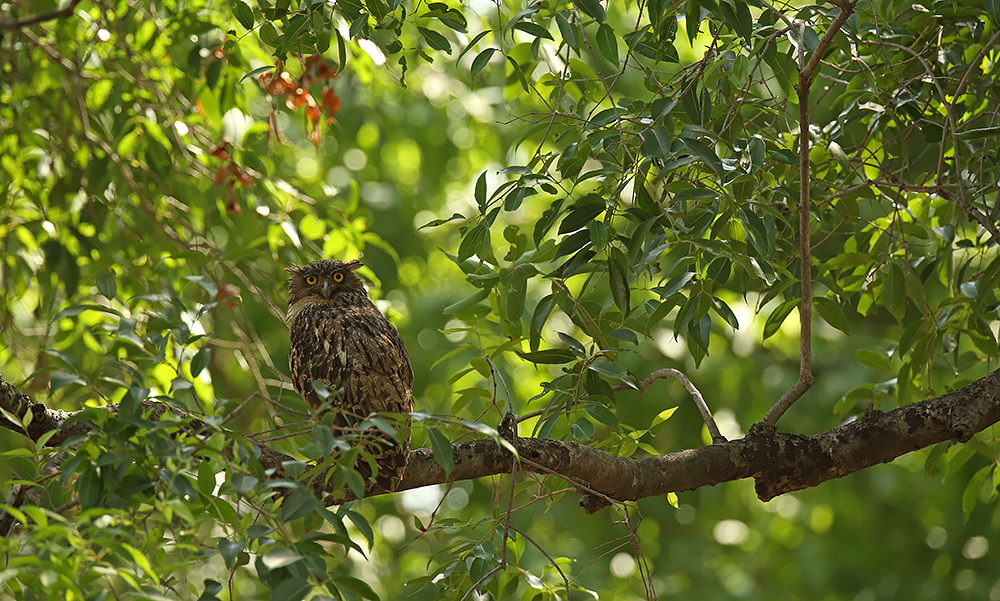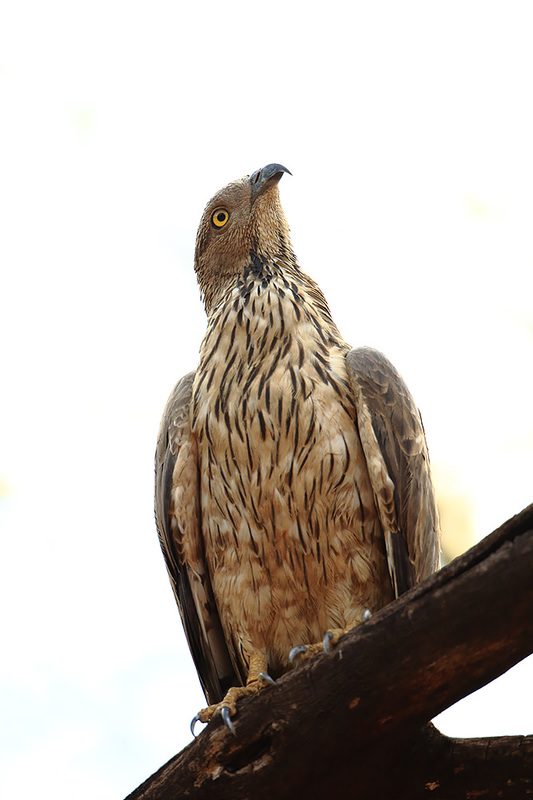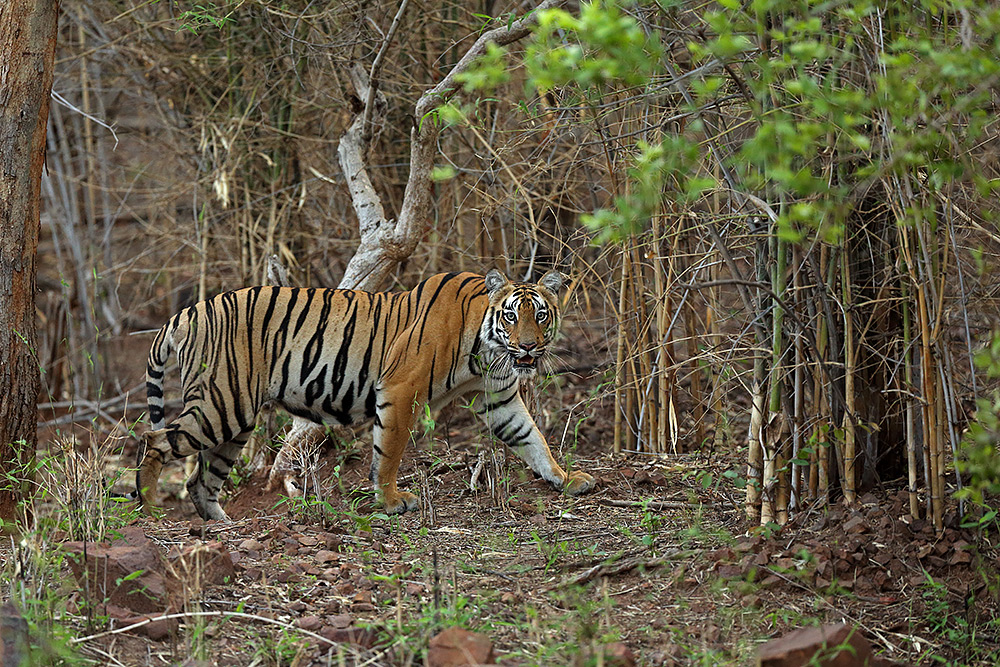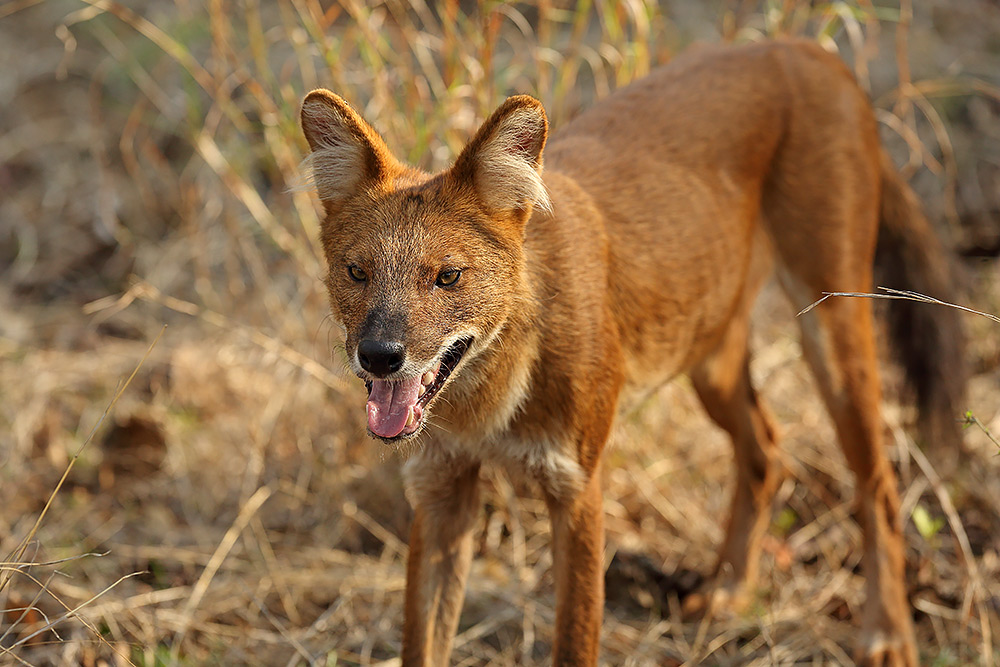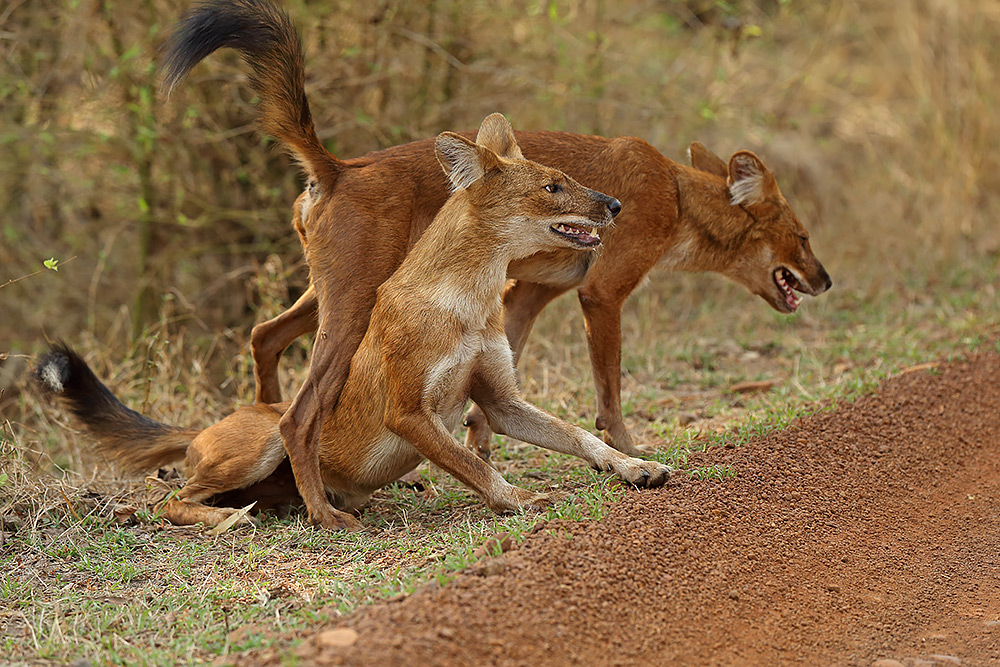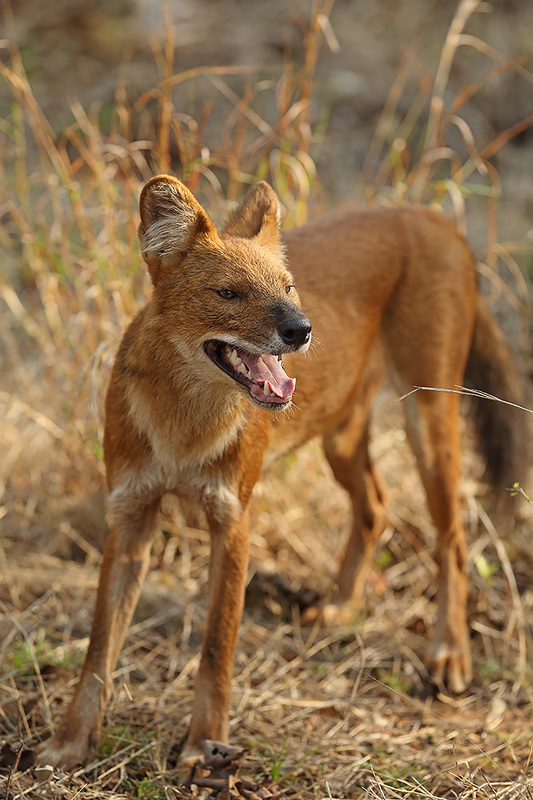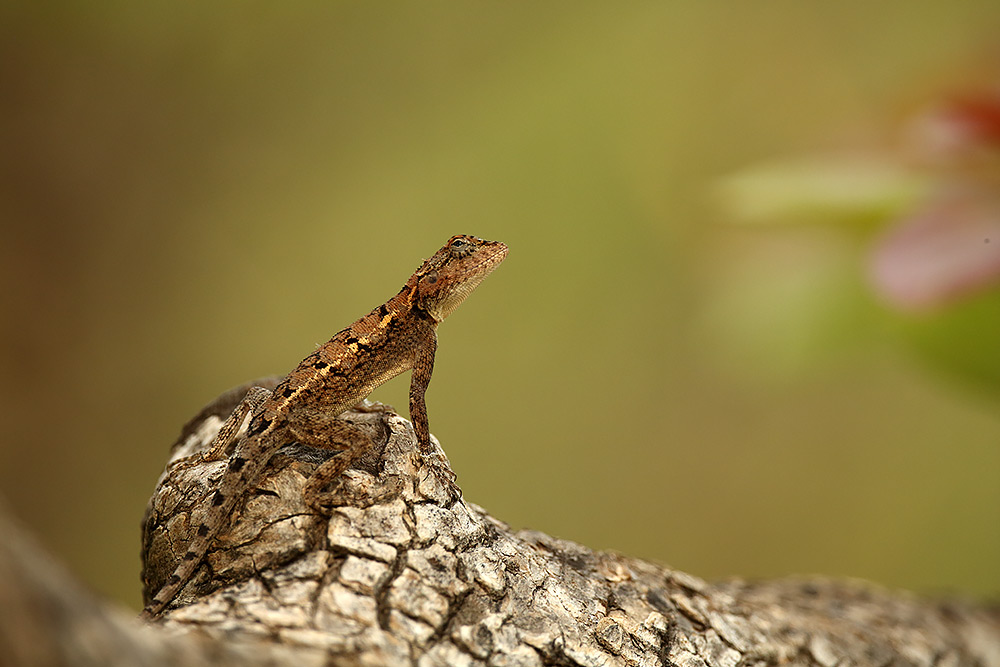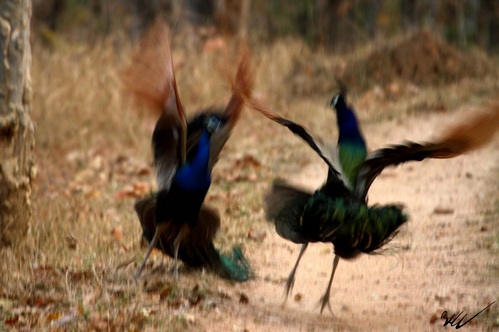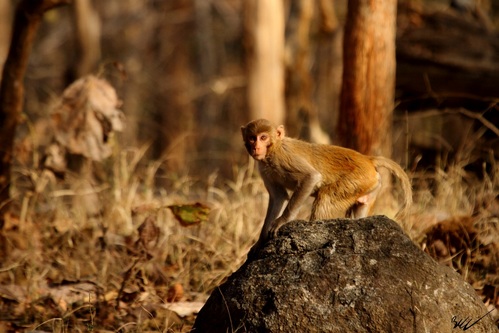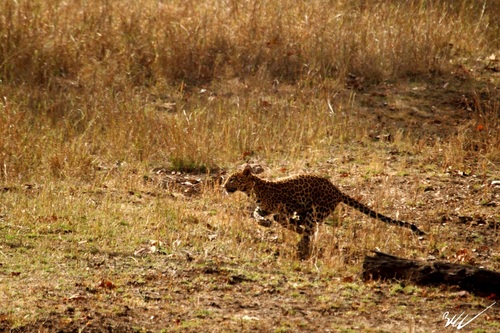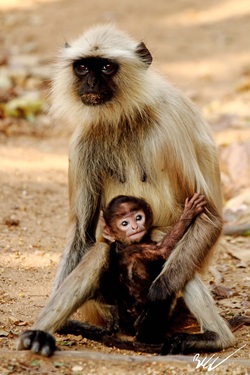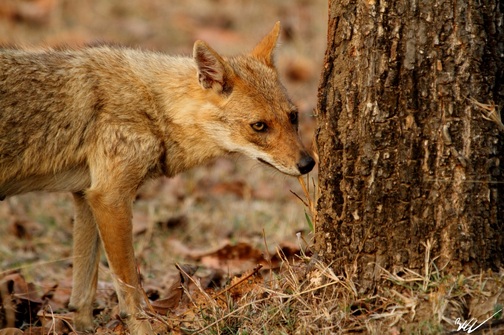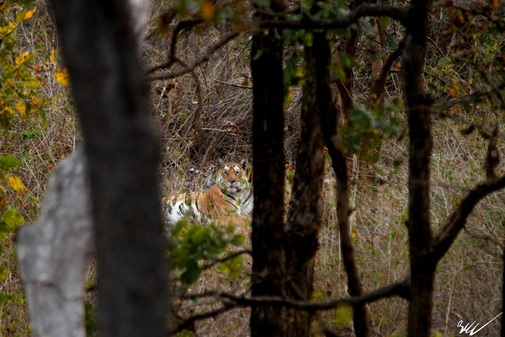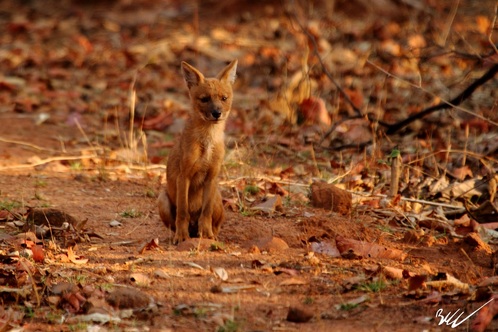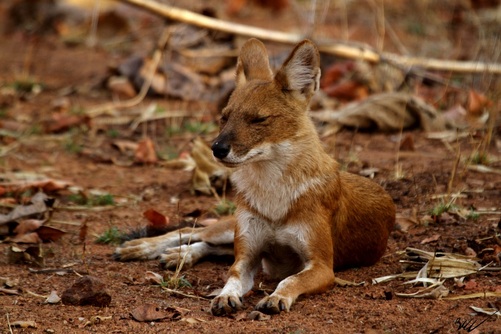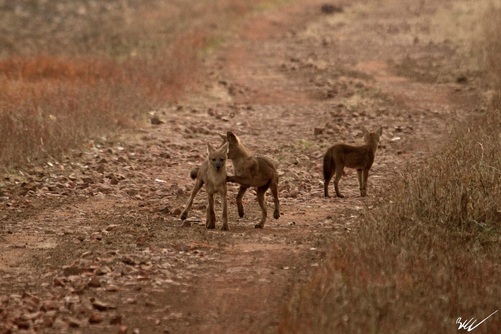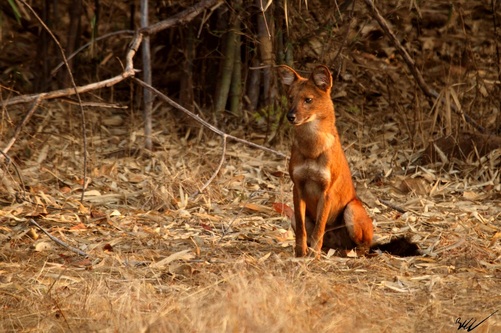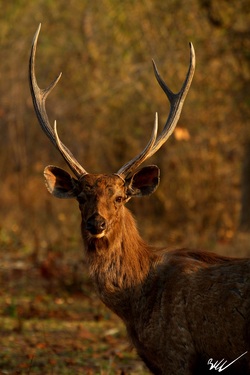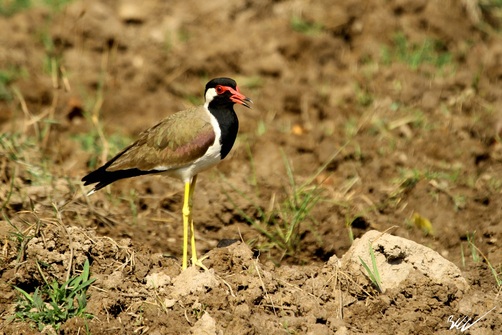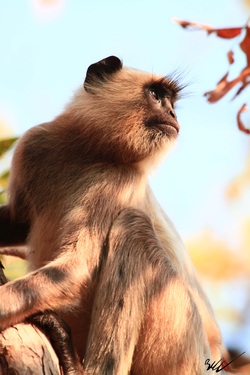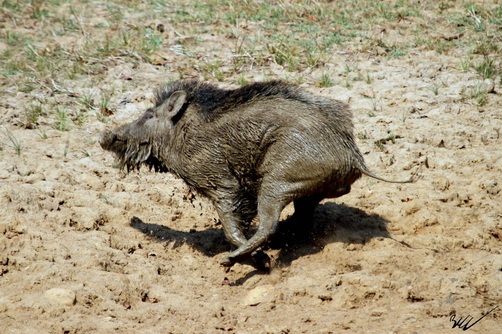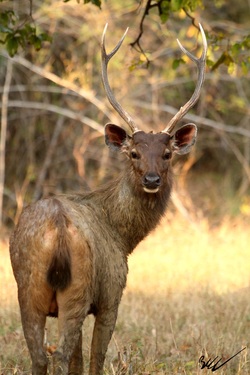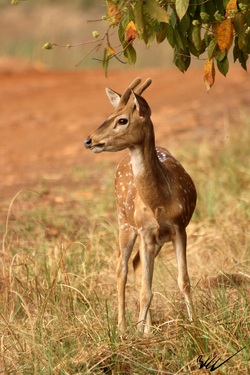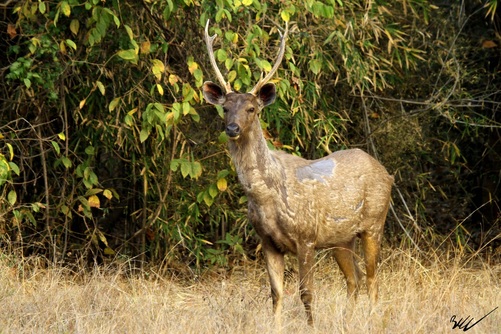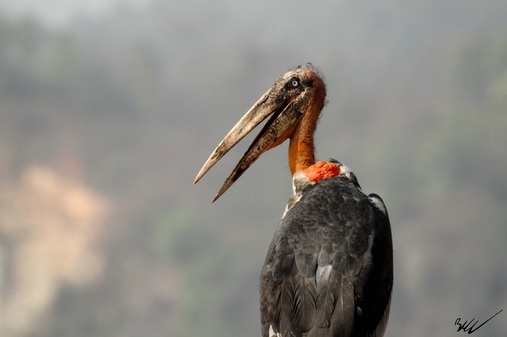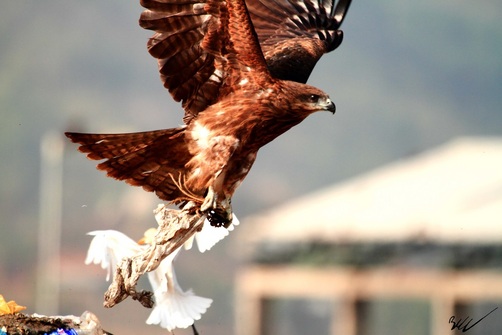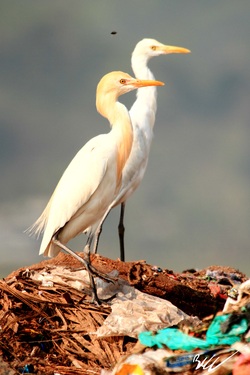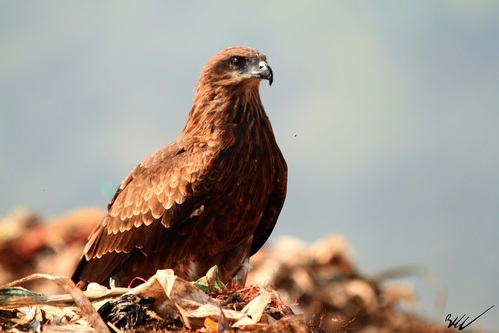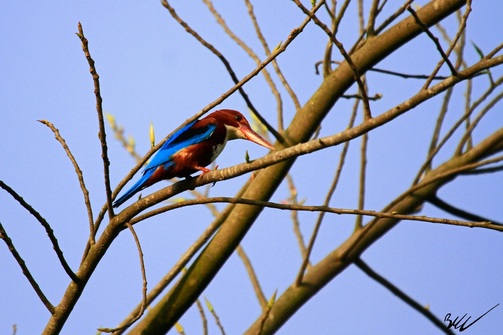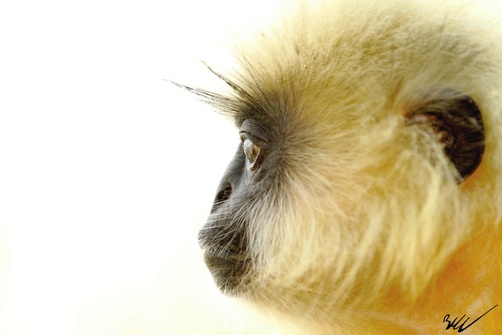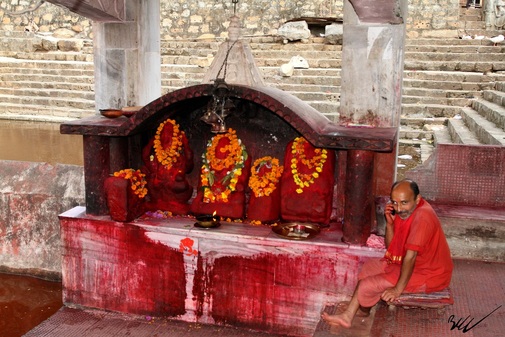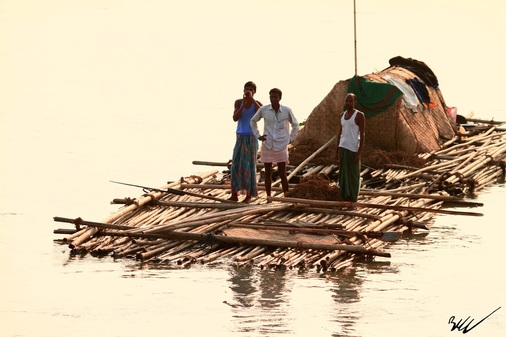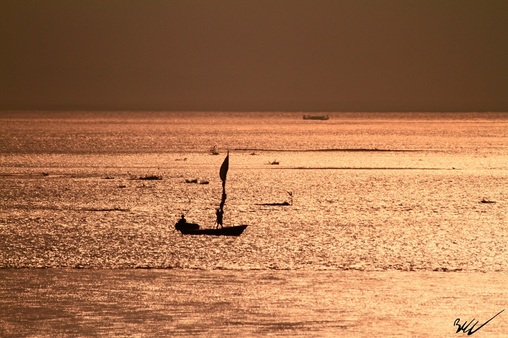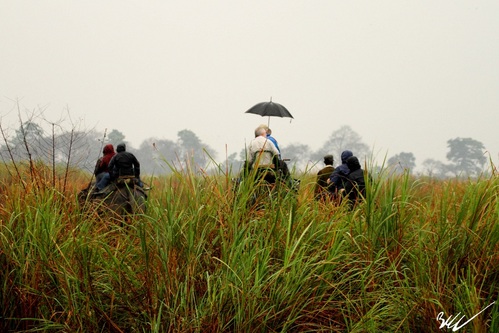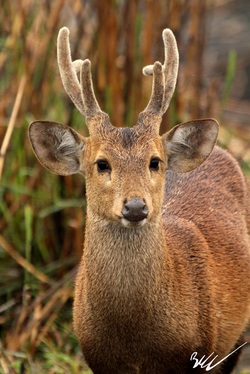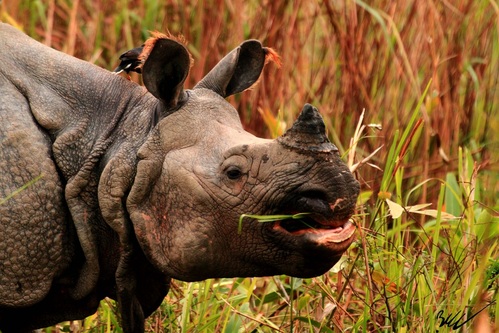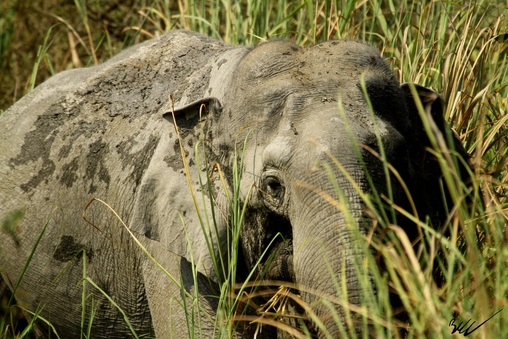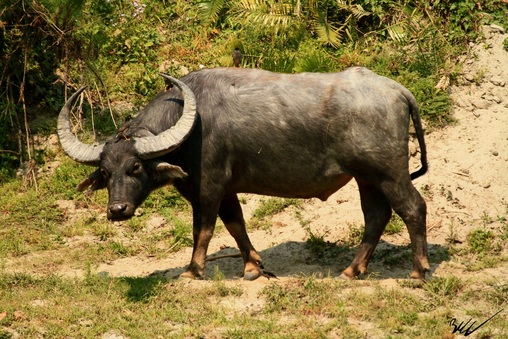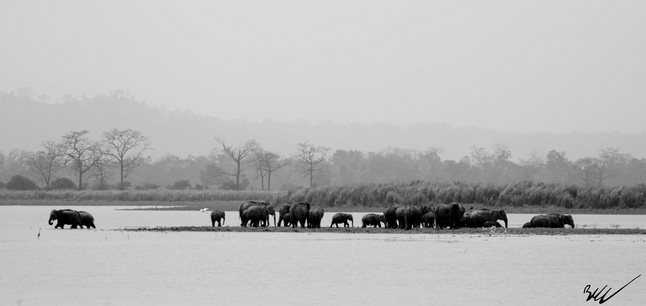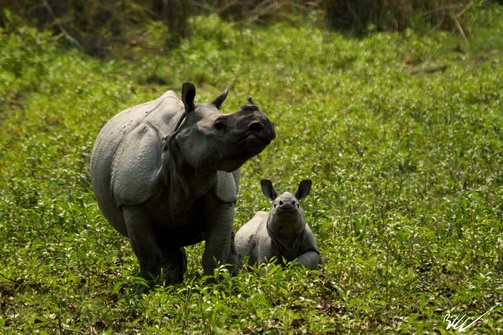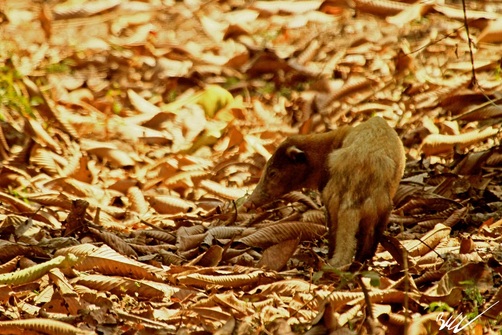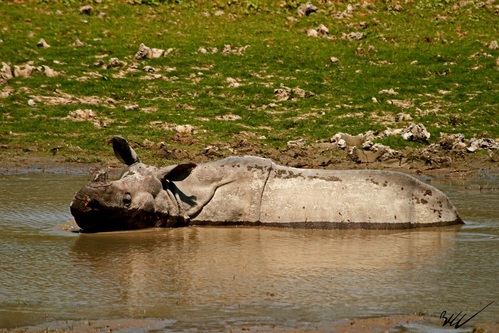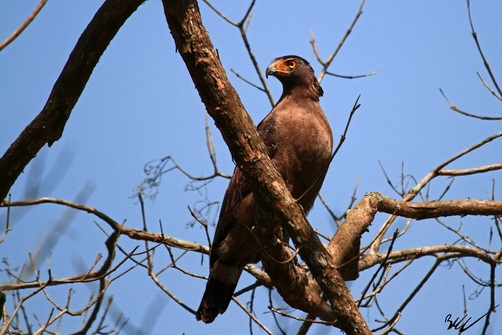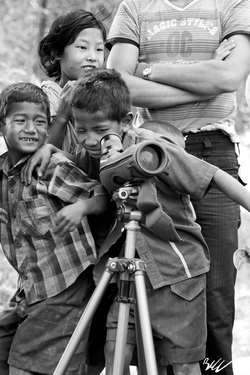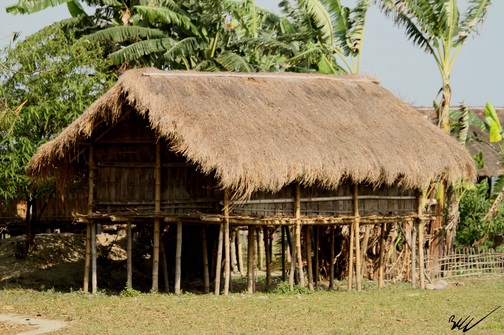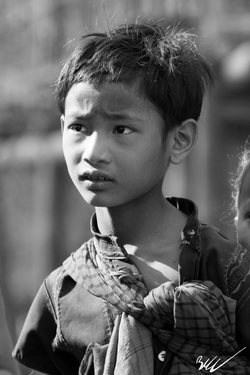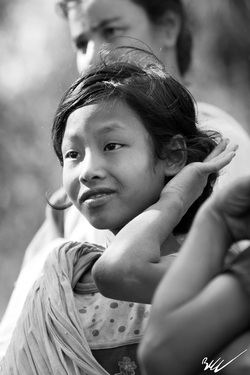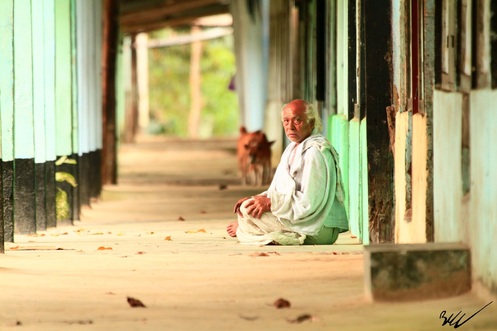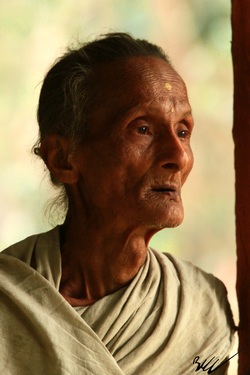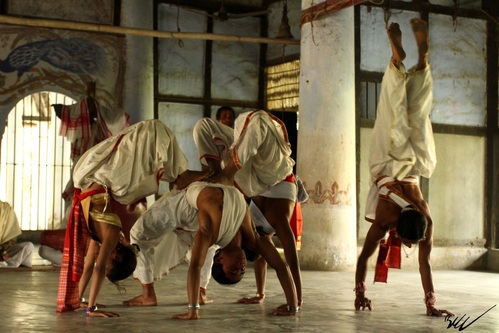|
I've been travelling to India since 2011, indeed you can even look back at my blog posts from the time (excuse the terrible photography). In that time, the country has completely changed, both for better and for worse. A thriving modern 'democracy', India has developed at a startling speed and domestic tourism has increased a hundred-fold (no bad thing). However, that does mean that many of India's once quiet reserves are now packed with people keen to catch a glimpse of a tiger. Trying to get away from the crowds can be tricky, but Nagarhole is a place where things are a little quieter and the wildlife sightings can be enjoyed that much more. Back in April, I was at the helm for Wildlife Worldwide's Nagarhole Photo Safari once again. This week-long trip is perfect for seeing, and photographing Asian elephant, tiger, leopard, Malabar giant squirrels, a plethora of birds and even sloth bear. There is, of course, so much more on offer, but hopefully that whets your appetite. This little slice of paradise really has become one of my favourite parts of India, and it delivers year on year. I know, I know, you want to see the photos. Our first afternoon rewarded us with two tigers, but alas, the photography opportunities were not really there. The next day though, we were treated to exceptional views of sloth bear in the morning and tiger in the afternoon. As you can see, it really didn't take long to get fantastic views, as well as some decent photography of some of our target species. We had hoped to have good encounters with Asiatic wild dog. Despite seeing them in the distance, we never got close enough for worthwhile photography opportunities. For the next couple of days, we focused on some of the smaller and less-photographed species that call the park home. That's not to say that we didn't enjoy views of some of the larger things, but it was these alternative species which provided the more rewarding photography. With such great subjects, the group were rewarded with an amazing portfolio. These 'B-list' species are actually, in my opinion, what makes Nagarhole such a special place to be. So far, we hadn't caught sight of a leopard (something the park is famous for), and so we decided to spend a morning focussing on these elusive cats. We drove along a track, slowly working our way down a hill and scanning every tree along the way. Parking up at the bottom of the hill, our driver Sadiq turned off the engine and we just listened for alarm calls (the best way to find big cats in the dense forests of India). After 10-minutes or so, with no sounds and relaxed chital (spotted deer) all around us, we slowly made our back up the hill. Varun, our guide, suddenly called to stop - there only 25 yards away, sat perfectly in a tree was a gorgeous female leopard. It was a misty morning and the forest had an ethereal feel to it. What an incredible sighting. The photography was just wonderful. Having already had the most magical of weeks, spoiled rotten with incredible sightings, we decided to spend the last full day focussing on the striped contingent once again. I don't think it matters how many tigers you see in the wild, you always want one more. And so we put in the hours and we were rewarded with one of those dreamy encounters - the hard work paid off. If you would like to join me in 2025, there are still a couple of spaces remaining. Please contact Wildlife Worldwide to find out more.
0 Comments
I haven't been back to India since 2019 - primarily due to Covid-19, but this year I was delighted to head back for a dedicated photography tour to Nagarhole National Park with Wildlife Worldwide. This is one of India's hidden gems and despite not being as well known as some of India's more illustrious parks, it offers some truly world-class wildlife encounters and for those that are patient enough, some excellent wildlife photography opportunities. Our group was spoiled with some memorable tiger sightings, several different leopards, gaur, deer and Asian elephant. It was a fabulous week in a beautiful part of the world, which for the time being is still relatively quiet. I hope you enjoy the photos. The best thing in Nagarhole is that you can be really lucky and enjoy your own, private sightings of the predators. Moments such as these are something to cherish and we had exclusive sightings of both dhole (Asiatic wild dog) and tiger. If you ever want to visit India, wanting to escape the crowds, I can't recommend Nagarhole National Park enough. Visit the Wildlife Worldwide website to find out more.
I have been to India numerous times before and it goes without saying that the main draw is the largest of the world’s cats, the tiger. However, there is so much more on offer in this remarkable country and earlier this year I visited a state I had not previously been to, Karnataka. I led a non-photographic trip, acting as a naturalist guide, in Nagarhole National Park. This is without a doubt, one of the finest reserves I have been to on the Indian subcontinent, a forest reserve that plays host to a staggering array of species. There are tiger here, needless to say, but it is the chance of seeing a black leopard that draws many to these foothills to the Western Ghats. When you throw in traditional leopards, Asian wild dog, wild Asian elephant, sloth bear and countless bird species, it really is a wildlife-lover’s paradise. As it wasn’t a photographic trip, I only managed to get some quick snaps, but hopefully these following images give you a real taste of what is on offer here … What a place Nagarhole is. All I can really say is that you need to book on to a Wildlife Worldwide’s Nagarhole’s Tigers, Wild Dogs & Leopards trip for 2020.
Last year was one of great change for me … after spending a year photographing in Australia, it was time to get crack on with my career and put photography on the back burner. Don’t worry - the photography will be back in force in 2017! I had built up an incredible portfolio of images in 2015, thanks to my time ‘down under’, and I decided to try my luck in a few competitions. It turns out I had some success – who would have thought that would happen? Well I was delighted to have images shortlisted in Outdoor Photographer of the Year, Bird Photographer of the Year and Australian Nature Photographer of the Year. The two images shortlisted in Bird Photographer of the Year both featured in the accompanying book and my image Murray Magic featured in the Kew Gardens exhibition. When I got the news that three of my images had made it through to the final of Australian Nature Photographer of the Year, I was excited but didn’t really think too much of it. It wasn’t until a friend (the incredibly talented Trevor Scouten) alerted me to the fact that these three images were actually going to feature in the exhibition, and accompanying media, that it really hit home. In June I was contacted again by the competition, informing me I was either a winner or runner up in one of the categories I had entered. I learnt no more until the results were announced in the press – I found out through the Australian news that I was a winner of the ‘Threatened Species’ category with my image titled Palm Grove Dingo. The image has since been used in the accompanying book, wall calendar, desktop calendar and diary. The image was then used at the main entrance of the exhibition – printed in large format … this for me was the greatest honour. It wasn’t all about the competitions though. I had a great year of travel once more with trips to India, Tobago and Colombia. None of which were necessarily exceptional from a photographic point of view but I did strike lucky on a few occasions (you can see a selection of images below). 2017 promises to be another great year for me with trips to Africa and Ecuador planned for my own photography. I will be leading two dedicated photography trips in June, one to Skomer Island in Wales for Puffins and the other to Finland to photograph Bears, Wolverines and Wolves. I will also be running one-to-one workshops a little closer to home focusing on Roe and Fallow Deer. If you have any interest in joining me on these trips I would love to hear from you – feel free to email me at any time.
I wish you all a very happy new year and I hope to see as many of you in 2017 as possible. There is one animal that elicits an emotional response like no other in the natural world. Which creature could it be? For me, and many others I know of, the Tiger has an aura, a spirit that seems to soar above those creatures around it. Don't be fooled though, this isn't the only draw to India ... it is just a case of trying to find a wild corner of this vast country to explore its natural delights. I have recently returned from a trip to India searching for Tigers and some of the stars of the Jungle Book. I had some issues along the way with cameras and park legislation but I won't go into that here. I didn't have the best trip from a photographic point of view but there were a few stand out moments which I thought I would share with you. The week started off pretty slowly and I didn't really have any sightings of any of Tadoba's standout species. However I did seem to have some better luck on the bird of prey front ... as you can see above. The my luck changed and I had an incredible encounter with a very handsome young male Tiger. Only moments after driving through the park gates we heard a sound that is comparable with that of a Lion in Africa. We heard the territorial call of the Tiger and we knew that it was heading back into the park, having spent the night patrolling the park boundary. We drove up into the park proper and stopped at the top of the hill and listened. The deep call sounded again from the forest, it was coming closer. We moved further down the road and waited for a moment that will live long in my memory, an intimate moment with one of the most striking individual cats I have ever seen. I was also really lucky with a particularly close encounter with a pack of Dhole (Indian Wild Dog), but the photography opportunities were tricky as the dogs being rather unsettled. Only moments before these images they had failed to hunt a Barking Deer, they weren't particularly keen to oblige and pose for photographs. I will be writing another post about the last few days I spent in Tadoba and going on to describe a few of my concerns too. Although I saw plenty of wildlife, I was rather shocked at some of the tourism practices within the park and the way this could directly affect the wildlife.
For now though I will leave you with a shot of this cute little fellow ... This morning was our last game drive in Pench, as this afternoon we would be heading to Kanha National Park. We were all allocated the same vehicles as the day before, to ensure that we all got a fair chance to see whatever came our way. We were allocated a different route this morning and within minutes we were seeing something unusual. We stumbled across a pair of Indian Rollers mating, they carried on for well over 30 seconds much to Indrajit's surprise.
After another half an hour we witnessed another amazing bit of bird behaviour. This time we watched two male peacocks fighting with one another as they flew up in the air in the most amazing display. Unfortunately the light levels were very low and it was nearly impossible to photograph but it was certainly a spectacular sight and one I shall not forget in a hurry. We moved on again, to where we saw the tiger the evening before but with no luck we photographed a cheeky Rhesus Macaque. We then went for breakfast at the central spot to hear, from a park guard, that there was a tiger at a lake we had already driven past. He also told us one of our group had seen a leopard on the road we would need to take. Off we went in a hurry, with a half eaten breakfast, in search of both tiger and leopard. We quickly reached the spot where the leopard had been seen with two vehicles waiting. Within seconds of our arrival a tiny female leopard burst out of her cover, across the road and into the thick bush on the other side. What luck and what timing! With that sighting over, keeping quiet about the tiger, we headed off in search of our foe. When we reached the lake, where she had been seen, we were extremely disappointed to find local men creating a fire break. She was probably still in the area but with people around she was not likely to show herself. We had a pleasant lunch back at Tuli Tiger Corridor before we climbed aboard our cars for our journey to our next destination, Kanha. We passed through some lovely countryside (plenty of wheat fields) before reaching the forested area outside of Kanha. We followed the boundary of the park, along a dirt road, for over an hour before rejoining the main road that would lead to our lodge. Half a mile before the lodge, we were going round a steep corner as we heard some frantic beeping from behind. I turned to see a a motorbike, out of control, go off of the road and down into a ditch at high speed. One man (who I believe was the passenger) went flying over the handlebars and hit the ground hard, whilst the second man (the driver) slammed into the bank of the ditch and looked like he was seriously injured. Our drivers did not stop but took us straight to the lodge, everybody was shocked at the event and we wanted to help. On a lighter note the lodge was absolutely beautiful, set in the forest with lovely accomodation and very friendly staff. The highlight of the evening was watching a giant flying squirrel glide across the night sky. This morning we had an early start and the new arrivals slowly trickled in for morning tea (most were a little late). Unlike Tadoba, the Pench authorities assign a route for each vehicle to try and keep them as spread out as possible. I was put in a vehicle with a lovely elderly couple and they, at first, struggled to understand our local guide. For the first couple of hours I would help pass on what the guide was saying and identifying things I was able to. It is amazing just how much you can pick up in a couple of days.
We saw some Gaur (Indian Bison) quite early on, these animals are the largest in the world of the bovine family. They are very impressive and are quite relaxed around the vehicles in the park. A little further along, we came across some fresh tiger pug marks. They were absoutely huge and were heading straight down the road. Unfortunately the tracks led to nothing and we headed off for our breakfast. We bumped into some guests along the way, who had seen a tiger's shoulders earlier that morning. We headed straight for the site but we had joined a traffic jam and the tiger was hidden in the dense foliage. We moved onto the grass on the edge of the road, to ensure we were not stopping anybody from passing, and we were quickly fined 500 rupees (almost £10) for driving off road. This was rediculous considering 100 yards ahead there were 15 vehicles driving off road trying to get a glimpse of the tiger. In the afternoon after a nice lunch and a nice little siesta we headed back into the park. This time we had Harish as our guide and we felt that this afternoon we were going to have better luck. Annoyingly, our vehicle was allocated the same route as this morning so off we went down the same track. After about 10 minutes we came across a group of Langurs in the road, one of which had a particularly young baby. We photographed away until we thought we were ready to move on but the mother in the middle of the road had a different idea and stayed put. She eventually decided to move on and we went off in search of tigers. We were heading for the area where the tiger had been seen this morning but en route we stopped to photograph some Chital, at one of the lakes. We then moved on in search of the tiger once more and once again we were distracted, this time by a pair of Golden Jackals. The driver noticed a flurry of vehicle activity ahead and we quickly moved off to investigate. We asked one of the vehicle drivers what the excitement was about. He pointed to a spot across a shallow valley, about 150 metres away, and said that there was a female tiger with 5 cubs. After about 5 minutes of the guides trying to point them out we eventually spotted them and to our delight we had our first glimpse of a family of tigers. It was a fantastic sight as the cubs were playing and the mother was relaxing. The whole group managed to get some glimpses and we were extemely happy with the day's distant sighting. Today was my last morning in Tadoba and my last chance, in this wonderful park, to see a tiger. We had the usual morning routine and we were off to the Northern part of the park to try and find those elusive tigers. We headed down the same road as the day before and as we approached the spot, where we had seen the wild dogs the day before, I noticed some deer running across the road ahead. We sat still and watched the deer for a few minutes until they disappeared into the thick bamboo. Only moments later a solitary wild dog appeared from where the deer had emerged and it sat by the side of the road. That was just the start to a wonderful wildlife encounter.
After a few minutes and after we had driven closer to this beautiful animal, we saw some movement on the edge of the bamboo. Then, at the same time, we all spotted a beautiful wild dog pup coming to join the adult. They seemed quite relaxed with our presence but the pup did keep its distance for a while. Then to our horror a park guard was cycling down the road and he did not care about disturbing these two wild animals. He rode his bike straight at them and the pup ran for cover. The adult stood its ground, yawning, to warn the guard not to come any closer. You could imagine it was saying "you see these teeth, do not even think of coming closer!". To our delight the pup reappeared and in actual fact, it came so much closer. This was one of the best moments of my wildlife viewing history, it was so intimate and it was just such a treat. If I was being incredibly picky (as a photographer), I would have preferred them to have been across the other side of the road, in the sunlight. We returned to the lodge, after seeing very little else, to have our breakfast and get ready for the road journey to Pench National Park. On the way we were to stop in Nagpur and have our lunch in the Tuli Imperial hotel. We left promptly and when we arrived at the Tuil Imperial I was met by the hotel manager, once again. I had chinese for lunch, this gives you a nice break from the curries, and before long we were back on the road. The drive to Nagpur from Tadoba was three hours and we had another four hours travel ahead. On the road to Pench we saw a new species, the Rhesus Macaque, playing on the verges and roadside trees. These are aggressive and extremely intelligent monkeys who often have little fear of man, this can lead to conflict. We arrived at Pench before it was dark and I have to say this lodge was, what I like to call, luxurious. It was a grand, 5 star lodge that seemed to be designed as if it was a Roman Palace and it was a little grand for my liking. Welcome to the the Tuli Corridor of Pench. We had a pleasant dinner and went for an early night's sleep. The rest of our group (those not doing the pre-tour extension) were due to arrive late this evening and would be joing us for a morning safari. Today was our last full day in this beautiful National Park and the pressure was on to try and find a tiger. We followed the usual routine of picking up our local guide as we entered into the park. After only a couple minutes drive into the park we saw something moving in the road ahead. We slowed down and then the guides said to us in a very quiet manner that it was Asiatic Wild Dog puppies playing and that their parents were by the side of the road in the long grass.
We settled down after the initial excitment and watched (and in my case photographed) the puppies and the adults play with one another for nearly half an hour. It was a lovely sighting and a great way to have a first encounter with a previously unseen species that is just so appealing. We continued on our way to find a tiger, once the dogs had disappeared into the forest and before long we stumbled upon a huge Sambar stag standing proudly in the road. He posed for a few photographs before slowly moving aside, he showed absolutely no fear of us in the vehicle. Once again we headed South to get to the location where the tiger had been seen the day before but once again we were distracted. This time a herd of Chital were running across a meadow at high speed, a few seconds later a Wild Dog appeared and within a couple of minutes another two emerged from the forest. We then watched the small pack make repeated attempts to hunt the Chital by running at them and the deer would then scatter at high speed. We assumed that this was to try and work out if any of the herd were weak or ill and they could then pick them off. After multiple attempts and no success the pack trotted off into the forest and after a few minutes we left them to go in search of the tiger once more. We came across the same jeep that saw the tigress the day before and once again they had struck lucky. They had heard alarm calls close to a waterhole and sat patiently before the tigress appeared and drank for a few minutes. They had a great view and some of the people got some lovely photographs. We were a little envious we had not seen the tigress but we did feel priveleged that we had been lucky enough to see Wild Dog attempt a hunt. In the afternoon we sat and waited in the area the tiger had been seen on both occasions but this afternoon she had gone to ground and there was no sign of her. Our first good sighting of a tiger would have to wait. After an afternoon of waiting and no results we went back to the lodge a little disappointed and after our dinner we went to bed to recharge for the next day. This morning it was a 6 o'clock wake up (after Assam I thought this was a lay in) and we were off at quarter past to head to the park gate. We once again picked up the local guide, who is a complusory addition to the team and set off into the park. We started off by heading straight for the same spot as yesterday, where the tigers had been seen mating. By the time we got there, there were already all the jeeps allowed in the park in place, these were all Indian tourists here for the weekend. After an hour or so waiting for the tigers to show themselves we moved on, later we heard the park officials had closed the loop to any vehicles so the tigers could be left in peace.
We then spent the rest of the morning driving around in the Northern part of the park, which is usually much quieter than the Southern part. On our way, we came across a group of Langurs sitting by the side of the road and we stopped to get some photographs. Up until these Langurs I had taken surprisingly few photographs as we had been so focused on seeing the tiger. We spent the rest of the morning driving around but saw very little indeed, there were a few Chital and a few Sambar here and there as well as a timid wild boar. Before we knew it we had to be out of the park (all Indian parks close during the middle of the day) and we got back to Tiger Trails Lodge for our breakfast. After lunch it was time for our third game drive in Tadoba and we were hoping this would be the drive we would get our first good sighting of a tiger. We went out to the Northern area we had visited earlier on in the day and again we saw very little. We went from waterhole to waterhole but nothing much stirred, the animals were staying in the shade avoiding the heat of the sun. At one waterhole we got quite close to a wild boar before it flew off into the undergrowth in alarm. After about two hours we came across another group staying at the lodge who had a close encounter with a tigress, who walked across the road right in front of them. We stayed put hoping she would reappear but once again we ran out of time and had to leave the park for the lodge. That night we had a traditional meal and we were invited to cook our own bread and make our own dessert, much to the local staff's amusement as we were all rubbish. We went to bed after a long hot day ready for our third day in Tadoba Tiger Reserve. This morning I got up at 7 o'clock and went downstairs to meet the guests and our guide, Harish, for breakfast. After we had finished our breakfast we went to pack our bags and all met up in reception to get into our vehicle for our 3 hour transfer to Tadoba. We were in a Toyata Innova, a large MPV, and the journey took us just under the suggested 3 hours. The last few hundred yards to our destination were a little bumpy and we got to see a few local villages on route. We eventually arrived safely at Tiger Trails Lodge, this is a small and simple lodge much more like a home than anything else and we were met by the owner's son, who looks after everything.
I was shown to my room, in the main building and had an hours rest before it was time for lunch. Whilst we were staying there, there was another Naturetrek group, but we kept ourselves seperate. After lunch we had an hour and a half until our first game drive in search of tiger and we had been told that there were reports of a mating pair in the South of the park. We were told this would be the focus for this afternoon's game drive and we were also warned to take a sun hat. We set out in the early afternoon and it was around the 40 degree mark, which was a little on the hot side. We got to the gate and picked up our local guide so in total, there were seven people crammed into a small little Suzuki jeep. We then headed off to see if we could get a glimpse of the tiger and after about 30 minutes we got to the spot. When we got there, there must have been 30 other jeeps lined up ahead of us queuing to get a glimpse of one of these poor tigers. It was then our turn to have a look and we could see the big cat's outline through our binoculars but it was not a photo opportunity. We moved around the corner and parked up as we hoped the tiger might move our way. After a couple of hours and no movement we headed off back to the lodge for our dinner and a rest. We did see our first Chital deer, our first Sambar deer and some cheeky Common Langur monkeys. At two o'clock in the morning I checked out of my basic and a little grotty hotel and headed off to Kolkata's Howrah station. As we were driving to the station we saw that there were a line of taxis stretching all the way down station's approach. When we reached this point there was absolutely no movement and after almost half an hour sitting in the same spot my driver turned around and went to look for another way to get me to my platform. Eventually this meant we had to drive the wrong way down a dual carriageway and go down the exit road from the station and into the car park by the platforms. He helped me with my bag and we went to the platform to wait for my train.
As everybody's seat (or bunk) is allocated in advance, you know which carriage you are going to be in, this means that you can go to the exact point on the platform where your carriage should be. So at four o'clock I climbed aboard my home for the next 19 or so hours. The train actually left half an hour early, well half an hour earlier than it said it was delayed by, so it was a good job we got there with plenty of time. I tipped my driver. padlocked by big bag underneath the seat and climbed into my top bunk for a couple of hours sleep. The next 18 hours were a rather lonely and boring affair as nobody spoke English except for a few basic words and the gentleman below me would not unfold his bunk. This meant I had no seat and no window to look out of. I spent all 18 hours in my bunk reading, playing with my PSP, listening to my music and using my mobile as a secondary gaming device. We eventually made it to Nagpur and with the help of the train guard (who I gave a good tip) I knew when to get off. I was met at the station platform by one of Travel Inn's representatives and he escorted me to the vehicle waiting outside. I was then driven for 15 minutes to the Tuli Imperial hotel. This is a grand 5 star hotel in the centre of Nagpur and I wasmet by the manager. They offered me my dinner but all I wanted to do was head off to my bed and catch up on the sleep I had missed the night before. The next day in the hotel was a day of relaxation and a chance to get nice and clean. I also met the three guests that would be joining me for the pre-tour extension of Naturetrek's Tiger Direct tour. We had our final breakfast on board our vessel, Charaidew, and everybody was given the choice as to whether they wanted to go and see the critically endangered Greater Adjutant Stork, which has a stronghold at Guwahati rubbish dump or stay on the boat. Some of the ladies in the group rejected the opportunity and decided to stay onboard but everybody else was keen to get a glimpse of these massive birds. We drove to the dump with the help of our minibuses and the first thing we saw when approaching the site, were hundreds of Black Kites circling above. Then as we reached the edge of the dump, we could see the Bangladeshi migrants, who have built their homes of rubbish and live among the rubbish, moving around the rubbish heaps. For some it was hard to see people living like this but unfortunately this is a relatively common sight in India and many other developing nations around the world.
Then we got our first sight of these rather ugly storks. They towered above some of the local women and I struggled to get a photo due to the minibus' movement. As we stopped and caught the stench of the dump in our nostrils (making everyone gag), one of the locals scared all the storks away so our photo opportunities were limited. The birds had flown deeper into the dump and one had to climb the rubbish to get closer, instead I focused on the Cattle Egret and Black Kites. After ten minutes or so most people had had enough of the smell and the tour leaders decided we should return to the boat to collect our belongings and make our way to the airport for our flight to Kolkata (Calcutta). The flight went without any difficulties and we transferred to the Hyatt hotel in Kolkata. This was where I said goodbye to the group and I was to catch the Azur Hind Express train to Nagpur, in central India. My driver and local guide got me to the station safely and found out that my train was delayed by 7 hours. After a couple of hours I was at a hotel, close to the station, for a few hours rest. The drama was to continue the following morning. Today we were able to have a little bit of a lay in as we were moored relatively close to our first destination. After some tea we left the Charaidew on foot and headed off for a walk around a local village in search of some birds. Myself and a guest (a keen photographer) seperated from the main group and went in search of some photo opportunities. We came across a number of bird species and took a few photos for identification and some particularly nice shots of a White-throated Kingfisher.
We had our breakfast on the boat as we cruised down the river to Peacock Island where there is a Hindu temple perched on the top of some rocks. We were given a tour of the Island but the main attraction was definitely a group of Golden Langurs which have learnt to take food from the temple's visitors. These monkeys are wild but they have become accustomed to human interaction and show absolutely no fear. We then sailed a few hundred metres down river to the river port of Guwahati, where we moored up against the river bank. Within minutes we had attracted a crowd of spectators and in moments two guests were on the shore meeting the young local women. They then got the women to call me down and I reluctantly did go and meet the locals. They then asked me to marry them even though they had husbands and children. After this humiliating moment they took us on a tour of their community which was spotlessly clean. We later found out this was a railway workers housing project so the standard of living was comparatively good to other places in the city. We were quickly escorted back to the boat for lunch by the crew of Charaidew before we got a proper tour, this was a real shame but we went back for our lunch. After lunch we had another temple tour lined up but this time at a very famous Hindu temple. People travel from other parts of India to visit Kamakhya Temple as it is regarded as a particularly "holy" site. At this particular temple they sacrifice male goats in honour of the gods and as usual we had to take our shoes off before we entered. There were people and goats everywhere and it was a particularly smelly, probably due to the animal carcasses. This afternoon there were no more sacrifices to the relief of several people. On these two days the weather was just awful, there is no other way to describe it. The first of the two days was in Nameri National Park and we had a long transfer from the boat to the river, which marked the edge of the park. The plan was to gently glide downstream in some inflatable rafts with the river's current. Due to the heavy rain the river was flowing fast but none the less we went ahead with the boat ride. Two people sat in a raft with two local paddlers at the rear. Within half an hour the heavens opened and by the end of the two hour boat ride everybody was very cold and completely soaked.
Everyone was happy to get back to the boat and we all spent the afternoon in the warm and dry saloon. It really was a day of disappointment for everybody which was a real shame. Normally this day is meant to be the highlight of the trip and a truly wonderful activity. The second day we had a jeep safari in Orang National Park. At first it seemed a little brighter and after a long transfer using the day boat we met up with our 6 jeeps. As usual the jeeps split into two groups of three and we planned to meet in the middle of our circular route. After ten minutes driving our lead jeep was stuck in a dip in the road, digging itself a deeper hole as the driver revved ever harder. After nearly an hour we had managed to get all three jeeps through and met up with the others. We narrowly missed out on a tiger sighting which would have been a very rare opportunity as there are only thought to be ten tigers in the whole park. In the afternoon when we got back to the boat the weather had improved and we had a beautiful cruise down river to the city edge of Guwahati. On the way we saw some bamboo rafts which would then be sold for scaffolding in the city. Today was our final day in Kaziranga National Park and we had arranged and elephant back safari to get really close to the Rhino. The weather today had taken a turn for the worse and it was rather cool with heavy rain. The forecast for the next few days was the same so everybody who had waterproofs took them and those that did not took umbrellas. Assam is the wettest place on Earth so a little rain is to be expected, even in the dry season.
We went out on the Elephants and got close to a number of the Rhinos but after an hour or so with everyone soaked through, legs stretched from straddling the elephants and rather cold we disembarked our four legged friends and went in search of breakfast. On the elephant backs we were lucky enough to see a Bengal Florican, these birds are on the brink of extinction so it was a real privelege to see one. We went to a nearby lodge for breakfast before transferring for about an hour to the Western range were we had another jeep safari lined up for us. The weather had decided to clear up a little for this outing, much to everybody's relief. We got some great sightings of the Rhinos, one was actually closer to us than when we were on the elephant back safari. In the evening when we were back on the boat I managed to electrocute myself after turning on my room's light. I flew across the room and hit the other wall, this was not a pleasant sensation at all and for the rest of the evening my left side was dead. Today was our second day exploring the unusual landscape of Kaziranga. This park consists of tropical lush forest and large tracts of grassland. This grassland is primarily made up of Elephant Grass, which as its name suggests is as tall as an Elephant. Once an animal moves into this grassland it is nearly impossible to see it until it decides to show itself. This time we were visiting the central range of Kaziranga which was over an hour drive from the boat.
Today we got much closer to some wild Asian Elephant and I was able to get some photographs through the extremely high Elephant Grass. The Rhinos also decided that today they would co-operate a little better and I was able to get some nice photographs of a mother and her calf before a vehicle spooked them and they disappeared in the wall of grass. The light was not particualrly favourable as the Sun was rather bright at this point but it was a wonderful moment anyway. After our drive we headed to a nearby lodge for lunch and we were able to give a tame elephant a bath, or in my case photograph the bath. On our way back to the boat we visited a tea plantation and stocked up on some Assam Tea and fresh Peppercorns. In the evening the local villagers came to show us a traditional dance which was both very loud and also a rather colourful affair. Today we were to go on our first adventure into Kaziranga National Park. This wild place in Assam is home to around 80 adult tigers and nearly 2,000 Greater One-horned Rhinos. The other famous inhabitants of the park are, Pygmy Hogs, the Bengal Florican, the mighty Asian Elephant and the increasingly rare Asian water buffalo.
We had a very early start with a transfer from Charaidew to the park boundary with the help of our day boat (country boat). When we got to shore there were 6 jeeps lined up on the bank waiting to take us into this wilderness. I shared my jeep with my room mate and off we went into the park to look for the amazing armour plated One-horned Rhino. These animals are critically endangered and around 2/3rds of the world's population live in this one national park. The most unusual sighting of the day was a Hog Badger, this is a strictly nocturnal animal that is almost never seen and hardly ever photographed. I was also lucky and got to see plenty of the Rhino, Elephant and Buffalo as well as many species of different deer (including the Muntjac). The photos below include the Hog Badger and some of the other local wildlife. Today was going to be another day of culture, we had sailed the evening before close to an island with a traditional Mishing village (the native people of Assam) and moored ourselves to a sand bar. This island had never been visited by a group of tourists before and out cultural guide was unsure when they would have last seen a white person in the village. Today they were going to get a big shock as there were going to be 23 white europeans descending on their quiet island home.
When we got there, the first thing we noticed were their houses, they were a traditional stilt house design that you would imagine seeing in Vietnam or Burma. We met only a few people to start with and they were certainly as intrigued by us as we were intrigued by them. One of the group had brought a spotting scope with him and soon there were local children and adults alike fighting to look through the scope. This was a group of westerners seeing a completely different culture to our own with very little western inluence. To our amazement many of them did have a mobile phone and a few of the richer families had a motorbike. They were a farming community and the island was covered in rice paddies. By the end of our tour around the village (a couple of hours long) the Naturetrek group had around 200 villagers following them and asking us to pose for them so they could take pictures using their mobile phones. I took hundreds of portrait shots that day but I have only included a few here. I am planning to create a gallery just for those portraits. After a great night sleep on board our river boat (Charaidew) we had a busy day ahead of us. Today we were moored off the island of Majuli in the middle of the Brahmaputra River. Majuli Island was once the largest river island in the world and it has its own road network, series of towns and its own culture. It could almost be a country in its own right when you compare its size to some European countries.
Our aim today was not to focus on wildlife, although we did see plenty of birdlife, but to try and see some of the cultural elements that make this place so interesting. We had arranged two monastery visits and at the second a traditional dance-drama had been arranged by the monks. The first monastery (Auniati) was not all that impressive but it certainly gave you an idea of what was involved and the way in which the monks lived and worshipped. These were Hindu monasteries so of course one had to take their shoes off and walk across the muddy floors barefoot. The second monastery (Kamalabari), were the dance-drama was performed, was a little more historic but still consisted of a tin roof on the main prayer area. It is important to respect their beliefs and make sure you abide by the correct rules when entering the prayer buildings. One must take of their shoes before even entering the monastery's grounds and then when the prayer hall you must only walk around the edges and never cross the middle of the room. We all sat down around the edges of this large prayer hall when some of the older monks started to play the drums. Four young boys came out, looking very feminine, and performed this story telling dance which consisted of "extreme yoga". A very interesting day and very different from the Gibbon Sanctuary the day before. This trip shall be as diverse as Assam is itself. I have attached a few photos below showing a couple of monks and a photograph of the dance performance. |
AuthorBret Charman Archives
July 2024
Categories
All
|












